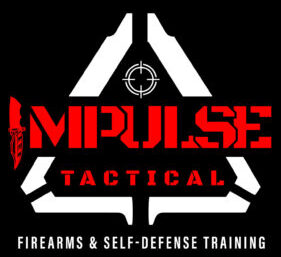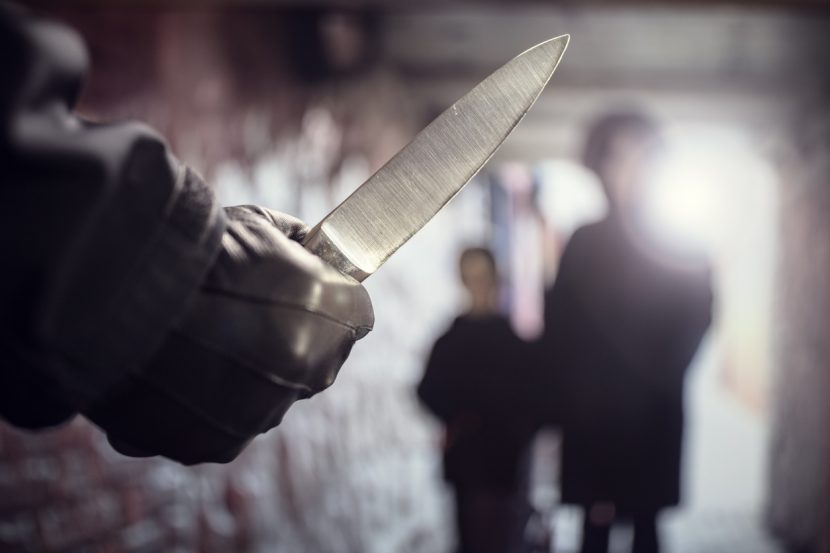
Empower Yourself: The Importance of Self-Defense for Women and Men
In an ever-changing world, knowing how to protect oneself is a skill that can never be underestimated. Whether it’s walking alone at night, navigating unfamiliar neighborhoods, or facing unexpected confrontations, having a basic understanding of self-defense can provide a sense of empowerment and security. It’s imperative and we all learn self-defense for women and men to survive any type of violence!
Self-defense isn’t just about physical techniques; it’s about awareness, confidence, and the ability to respond effectively to potential threats. This is why Impulse Tactical follows these three (3) foundational rules to survive any attack!
Let’s delve into why self-defense is crucial and explore some essential tips for staying safe in various situations.
Why Self-Defense Matters
- Personal Safety: In today’s society, instances of crime and violence are unfortunately not uncommon. Learning self-defense techniques can significantly reduce the likelihood of becoming a victim in dangerous situations.
- Confidence Booster: Knowing that you have the ability to defend yourself if necessary can boost your confidence and self-esteem. This newfound confidence can positively impact various aspects of your life, from personal relationships to professional endeavors.
- Empowerment: Self-defense training empowers individuals by giving them a sense of control over their safety. Rather than feeling helpless or vulnerable, knowing how to protect oneself fosters a mindset of strength and resilience.
- Physical and Mental Health Benefits: Engaging in self-defense training provides numerous physical and mental health benefits. It improves strength, flexibility, coordination, and cardiovascular health. Additionally, the focus and discipline required in self-defense practices can enhance mental clarity and reduce stress.
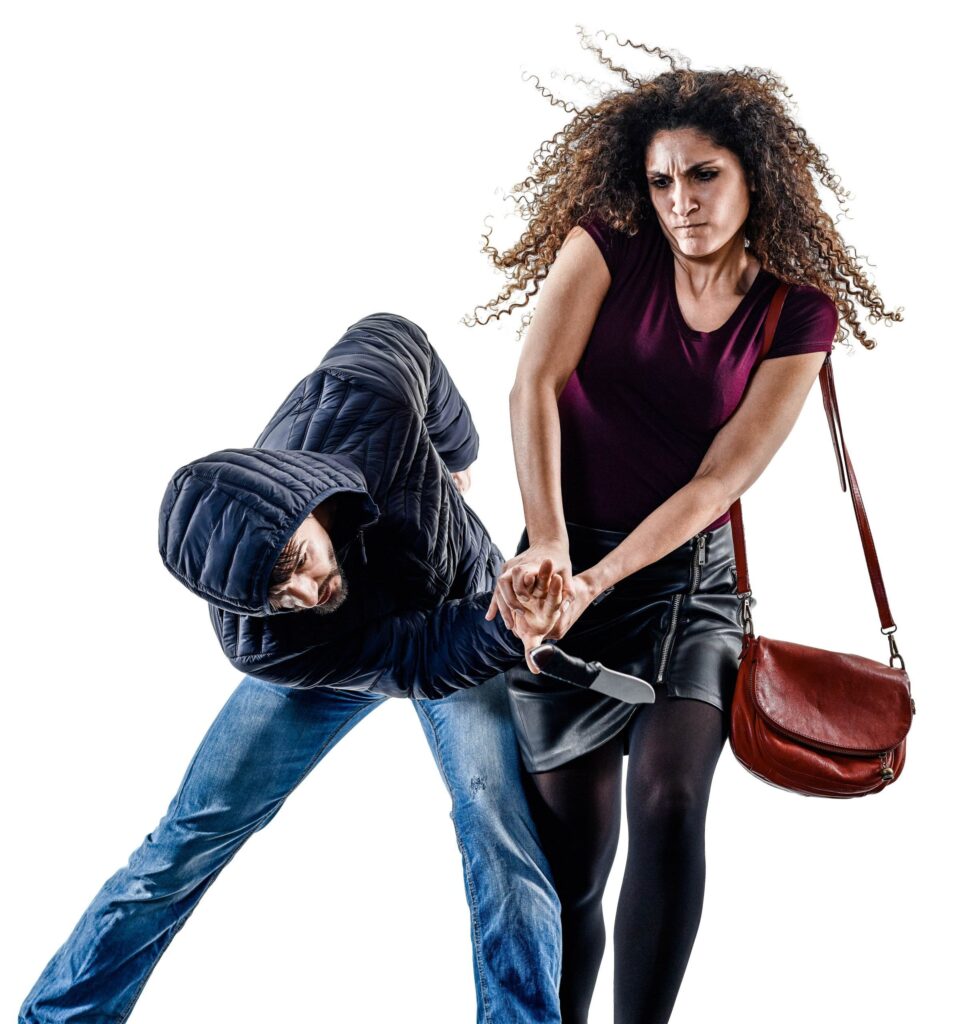
Essential Self-Defense Tips
- Stay Alert: Awareness is the first line of defense. Pay attention to your surroundings, especially in unfamiliar or potentially risky environments. Avoid distractions such as headphones or excessive phone use when walking alone.
- Trust Your Instincts: If something feels off or uncomfortable, trust your instincts and remove yourself from the situation if possible. Intuition is a powerful tool for self-preservation.
- Maintain Distance: Whenever feasible, keep a safe distance from strangers or individuals who appear suspicious. This provides you with more time to react and assess the situation if it escalates.
- Practice Verbal De-escalation: Many confrontations can be diffused through effective communication. Stay calm, assertive, and use verbal techniques to defuse tense situations before they become physical.
- Learn Basic Techniques: Consider taking a self-defense class or learning basic techniques. Focus on simple yet effective moves that target vulnerable areas such as the eyes, throat, and groin. Learning effective self-defense tactics is not difficult or time consuming.
- Use Personal Safety Devices: Carry items such as pepper spray, a personal alarm, or a tactical flashlight for added protection. Familiarize yourself with how to use these tools safely and effectively. At Impulse Tactical, we have a specific course that teaches you exactly how and when to use these items!
- Stay Fit: Physical fitness plays a crucial role in self-defense. Regular exercise improves strength, agility, and endurance, all of which are essential for effectively defending oneself if needed.
- Seek Professional Help: If you’ve experienced trauma or struggle with fear/anxiety related to personal safety, consider seeking support from a therapist or counselor. They can provide coping strategies and techniques to help you feel more secure and confident.

Conclusion
Self-defense is not just a skill; it’s a mindset and a way of life. By prioritizing personal safety and taking proactive measures to protect oneself, individuals can navigate the world with greater confidence and peace of mind. Remember, self-defense is about empowerment, not aggression. You don’t have to carry a gun or knife to defend yourself, but if you do, learn how to use them responsibly!
By staying aware, trusting your instincts, and equipping yourself with the necessary tools and techniques, you can enhance your safety and well-being in any situation.
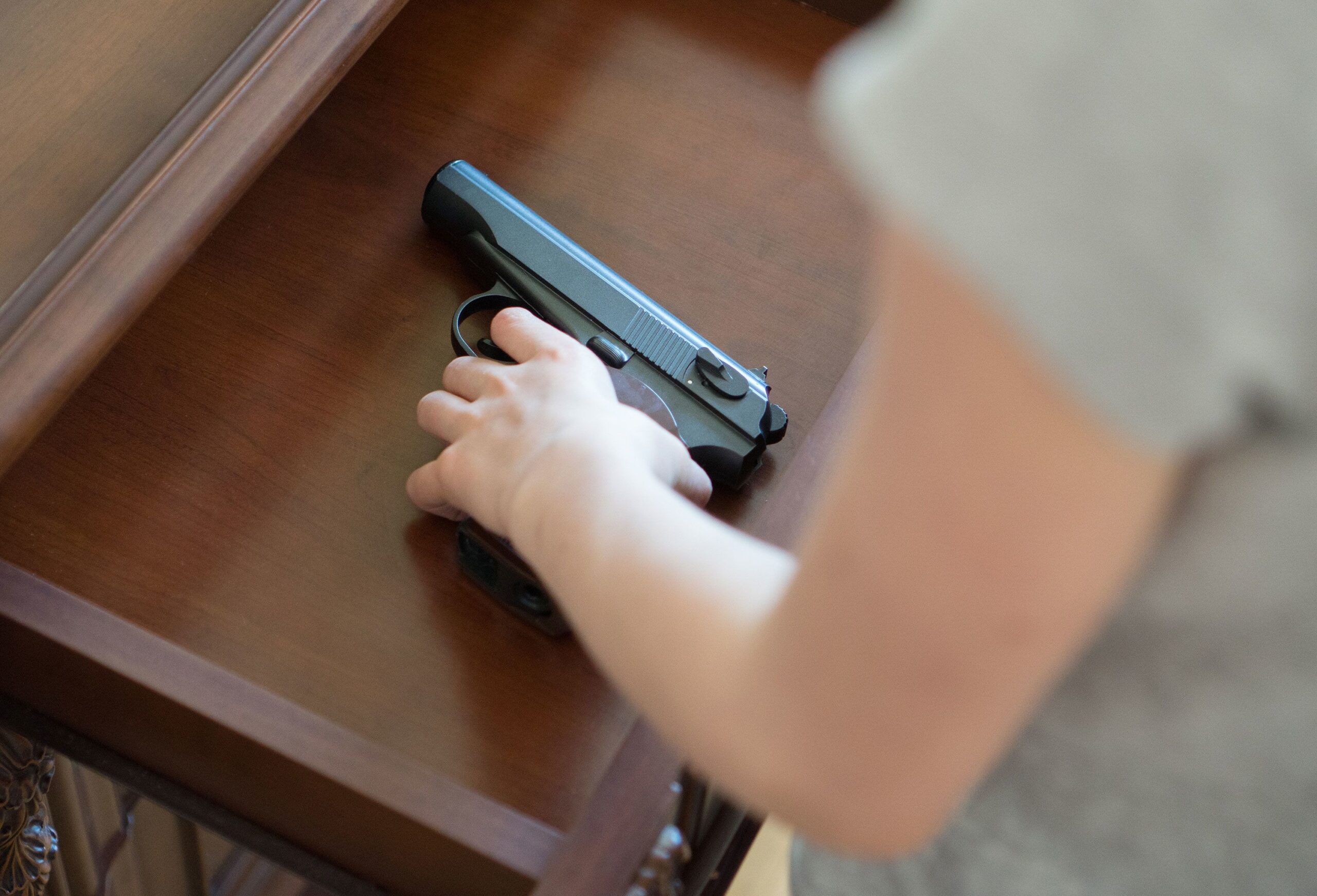
Beginner’s Guide to the Handgun
Everything a Beginner Needs to Know About a Handgun
So you’re looking for information about handguns and it’s all over the place. Look no further as it’s right here. We will educate you at the most basic level of handgun anatomy, ammunition, firearm cleaning, laws, storage, and safety.
As a first-time handgun owner, it’s crucial to understand that owning a firearm comes with significant responsibilities. Here’s some essential advice:
- Safety First: Always treat your firearm as if it’s loaded, even if you believe it’s not. Keep your finger off the trigger until you’re ready to shoot, and always point the gun in a safe direction.
- Familiarize Yourself with Your Firearm: Learn how to safely handle, load, unload, and operate your handgun. Read the owner’s manual thoroughly and consider taking a certified firearms safety course for hands-on instruction.
- Secure Storage: Store your handgun securely, preferably in a locked safe or cabinet, away from unauthorized access, especially children or individuals who shouldn’t handle firearms.
- Know the Law: Familiarize yourself with the laws and regulations regarding firearm ownership, possession, transportation, and use in your area. Stay updated on any changes in legislation.
- Practice Regularly: Shooting is a skill that requires practice to maintain proficiency. Consider regular trips to the shooting range to hone your skills and familiarize yourself with your firearm.
- Understand the Consequences: Recognize that owning a gun means you have the potential to cause harm. Understand the legal, moral, and ethical implications of using lethal force in self-defense situations.
- Be Responsible: Never use your firearm under the influence of alcohol or drugs. Additionally, be mindful of where and how you discharge your firearm, ensuring you’re in a safe environment.
- Seek Additional Training: Consider taking advanced firearms training courses to improve your skills and knowledge. Training in defensive shooting, situational awareness, and conflict resolution can be invaluable. Check out and schedule a course now!
- Join a Community: Connect with other responsible gun owners through local gun clubs or online forums. Learning from experienced individuals can provide valuable insights and support.
- Stay Informed: Keep up-to-date with developments in firearm technology, safety practices, and legal issues. Continuous learning is essential for responsible gun ownership.
Remember, owning a handgun is a significant responsibility that should not be taken lightly. Prioritize safety, education, and adherence to the law to ensure a positive and safe experience as a gun owner.
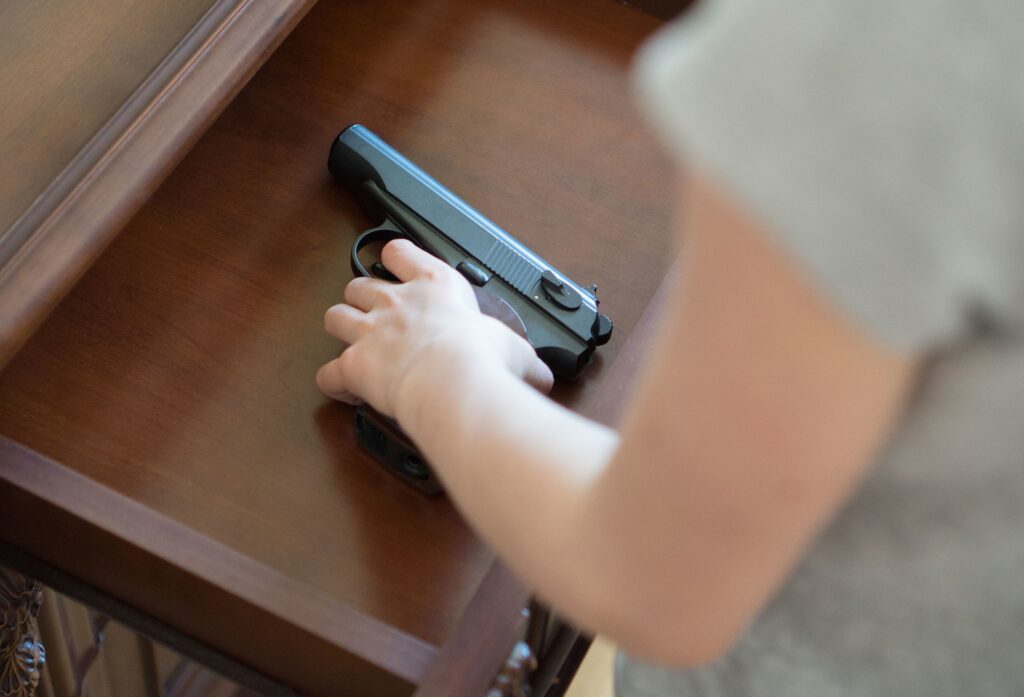
Firearm Safety FIRST
Certainly, safety is paramount when it comes to owning a firearm. Here’s a more detailed breakdown of key safety aspects:
- Treat Every Firearm as if it’s Loaded: Regardless of whether you believe a gun is unloaded, always treat it as if it’s loaded. This mindset helps prevent accidents caused by mishandling or negligence.
- Keep Your Finger Off the Trigger: Until you’re ready to shoot, keep your finger off the trigger and outside the trigger guard. This prevents accidental discharges, especially in high-stress situations.
- Always Point the Muzzle in a Safe Direction: The muzzle of the firearm should always be pointed in a direction where an accidental discharge would cause minimal or no harm, often referred to as a “safe direction.” Never point a firearm at anything you don’t intend to shoot.
- Be Aware of Your Target and What’s Beyond: Before firing, always be sure of your target and what lies beyond it. Bullets can penetrate through objects and continue traveling, posing a risk to unintended targets.
- Use Proper Ammunition: Ensure you’re using the correct caliber and type of ammunition specified for your firearm. Using incorrect ammunition can cause malfunctions or even catastrophic failures.
- Store Safely and Securely: When not in use, store your firearm in a secure location, such as a locked safe or cabinet. Consider using trigger locks or cable locks for additional security, especially if you have children or unauthorized individuals in your household.
- Practice Proper Handling and Operation: Familiarize yourself with the operation of your firearm through practice and training. This includes safely loading and unloading, as well as clearing malfunctions.
- Avoid Alcohol and Drugs: Never handle a firearm if you are under the influence of alcohol, drugs, or any substance that may impair your judgment or coordination.
- Wear Eye and Ear Protection: When shooting, always wear appropriate eye and ear protection to safeguard against potential injury from flying debris and loud noises.
- Regular Maintenance: Keep your firearm clean and properly maintained to ensure it functions safely and reliably. Follow manufacturer guidelines for cleaning and maintenance procedures.
By strictly adhering to these safety principles and continuously practicing safe handling techniques, you significantly reduce the risk of accidents and ensure a safe environment for yourself and those around you. Safety should always be the top priority in every aspect of firearm ownership and use.
Safe Handling of a Firearm
Properly and safely handling a handgun involves following a set of disciplined procedures to ensure the firearm is always under your control and poses no risk to yourself or others. Observing and getting hands-on experience under instruction is ideal for safe and secure gun operation and handling. Get involved with an Essential Handgun class. Here’s a step-by-step guide for operating and loading/unloading a handgun safely:
- Prepare a Safe Environment: Before handling your handgun, ensure you’re in a safe environment. Ensure the firearm is unloaded, and there is no ammunition nearby. Also, ensure you have sufficient space to handle the firearm without obstruction.
- Grip the Firearm Correctly: With your dominant hand, grasp the handgun firmly, wrapping your fingers around the grip. Keep your trigger finger indexed along the frame of the firearm, away from the trigger guard. Use your non-dominant hand to support the firearm, forming a two-handed grip for stability.
- Point the Muzzle in a Safe Direction: Always ensure the muzzle of the handgun is pointed in a safe direction, away from yourself and others. This means pointing it toward the ground or a safe backstop.
- Engage Safety Mechanisms (if applicable): If your handgun is equipped with a safety mechanism, ensure it is engaged (if desired) before proceeding with any further steps.
- Check the Chamber: Before handling a firearm, always visually and physically inspect the chamber to ensure it’s empty. Lock the slide back (if applicable) and visually inspect the chamber to ensure no rounds are present. Run your finger along the chamber to verify it’s clear.
- Load the Firearm: To load the firearm, insert a loaded magazine into the magazine well until it clicks into place. Then, release the slide (if necessary) to chamber a round. Use the slide release or pull the slide rearward and release it to allow the slide to move forward, chambering a round.
- Unload the Firearm: To unload the firearm, first, remove the magazine by pressing the magazine release button and pulling the magazine out of the grip. Next, lock the slide to the rear to visually and physically inspect the chamber, ensuring it’s empty. Finally, release the slide forward to complete the unloading process.
- Store the Firearm Safely: Once you’ve finished handling the handgun, ensure it’s stored safely and securely. Store the firearm unloaded, with ammunition stored separately in a locked container or safe, especially if there are children or unauthorized individuals in your household.
- Practice Regularly: Familiarize yourself with these procedures through regular practice and training sessions. Repetition is key to building safe handling habits and maintaining proficiency with your handgun.
By following these steps diligently and consistently, you can ensure that you handle your handgun safely and responsibly, minimizing the risk of accidents and promoting a safe shooting environment for yourself and those around you.
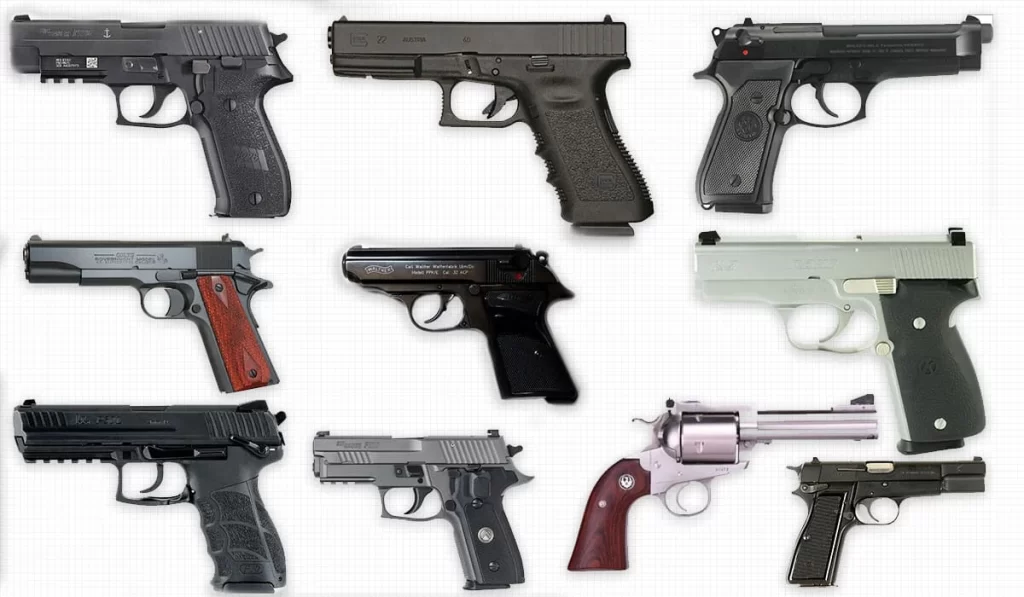
Types of Handguns
The terms “pistol” and “revolver” are often used interchangeably, but they refer to different types of handguns with distinct operating mechanisms:
- Pistol:
- A pistol is a type of handgun that typically features a semi-automatic action.
- Semi-automatic pistols use the energy from the fired cartridge to eject the spent casing, cock the hammer or striker, and chamber the next round.
- Pistols have a magazine that holds multiple cartridges and is inserted into the grip of the firearm.
- Examples of pistols include the Glock, Smith & Wesson M&P, and 1911.
- Revolver:
- A revolver is a type of handgun that uses a rotating cylinder to hold multiple cartridges.
- Revolvers are typically either single-action or double-action.
- In a single-action revolver, the shooter must manually cock the hammer before each shot, while in a double-action revolver, pulling the trigger both cocks and releases the hammer.
- The cylinder of a revolver rotates to align each chamber with the barrel for firing.
- Revolvers do not have a magazine; cartridges are loaded individually into each chamber of the cylinder.
- Examples of revolvers include the Smith & Wesson Model 686, Colt Python, and Ruger SP101.
In summary, the main difference between a pistol and a revolver lies in their operating mechanisms: pistols are semi-automatic handguns with a magazine, while revolvers use a rotating cylinder to hold cartridges and do not have a magazine. Each type of handgun has its advantages and disadvantages, and the choice between them often comes down to personal preference, intended use, and specific features desired by the shooter.
Single Actions vs Double Action
The primary difference between single action (SA) and double action (DA) handguns lies in how the trigger operates the firing mechanism of the firearm. Most pistols or handguns are double action nowadays. Older “Wild West” revolvers were typically single action but only a few single action handguns are still manufactured today such as the Springfield 1911. Here’s an explanation of each:
Single Action (SA):
- In a single action handgun, pulling the trigger performs only one action: releasing the hammer or striker to strike the firing pin or primer.
- Before firing, the hammer or striker must be manually cocked (either by the shooter or by some external action like racking the slide) to prepare the firearm for a shot.
- Examples of single action handguns include many traditional revolvers and some semi-automatic pistols like the Colt 1911.
- The trigger becomes a “hair trigger” once the hammer becomes cocked making it extremely easy to fire.
Double Action (DA):
- In a double action handgun, pulling the trigger performs two actions: cocking the hammer or striker and then releasing it to fire the cartridge.
- The trigger pull both cocks the hammer or striker and then releases it in one continuous motion.
- Double action handguns offer the advantage of being able to fire without manually cocking the hammer or striker, allowing for quicker follow-up shots.
- Some double action handguns may also have the option of manually cocking the hammer or striker for a lighter trigger pull, essentially functioning as a single action firearm for subsequent shots.
- Examples of double action handguns include many revolvers and semi-automatic pistols like the Smith & Wesson M&P series and Glock pistols with double action triggers.
Additionally, there are variations like single-action/double-action (SA/DA) handguns, which offer both modes of operation. These firearms can be fired in double action mode for the first shot (which includes cocking and releasing the hammer or striker with one trigger pull), and then subsequent shots are fired in single action mode (where the hammer or striker is cocked manually for each shot). This provides versatility in shooting preferences and scenarios.
Parts of a Semi-Automatic Pistol
A semi-automatic pistol typically consists of several main parts:
- Frame: The frame is the main body of the pistol, which houses the firing mechanism, trigger assembly, and magazine well. It provides the structure and housing for the other components.
- Slide: The slide is a moveable outer casing that houses the barrel, recoil spring, and firing pin assembly. It reciprocates back and forth during the firing cycle, extracting and ejecting spent casings and loading fresh rounds from the magazine into the chamber.
- Barrel: The barrel is the metal tube through which the bullet travels when fired. It is fixed to the frame or, in some designs, may be removable for maintenance purposes.
- Recoil Spring: The recoil spring is a heavy spring located inside the slide that absorbs the recoil energy generated when the gun is fired. It helps to cycle the slide and return it to its firing position after each shot.
- Firing Pin: The firing pin is a small metal rod or pin that strikes the primer of the cartridge when the trigger is pulled, igniting the gunpowder and firing the bullet.
- Trigger Assembly: This includes the trigger, trigger bar, sear, and other components that enable the firing mechanism. When the trigger is pulled, it releases the sear, allowing the firing pin to strike the primer.
- Magazine: The magazine is a container that holds multiple rounds of ammunition in a spring-loaded mechanism. It is inserted into the grip of the pistol and feeds rounds into the chamber as the gun is fired.
- Sights: Sights are devices mounted on the top of the pistol, used to aim the firearm. They typically consist of a front sight and a rear sight, which are aligned to help the shooter aim accurately.
- Grip: The grip is the handle of the pistol, designed to be held by the shooter’s hand. It may have textured surfaces or ergonomic features to improve grip and control.
These are the main parts found in most semi-automatic pistols, though specific designs may vary slightly in terms of their internal mechanisms or features.
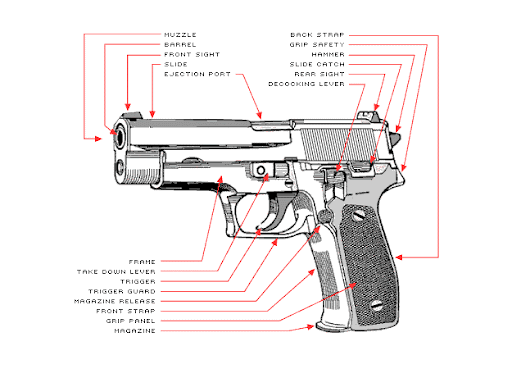
Parts of a Revolver
A revolver handgun typically consists of several key components, each playing a vital role in its operation. Here are the main parts of a revolver handgun:
- Frame: The frame is the central component of the revolver, serving as the housing for all other parts. It provides structural support and houses the trigger mechanism.
- Barrel: The barrel is the cylindrical tube through which the bullet travels when fired. It’s typically located at the front of the firearm and is responsible for guiding the bullet’s trajectory.
- Cylinder: The cylinder is a rotating component that holds multiple chambers, each containing a cartridge. When the trigger is pulled, the cylinder rotates, aligning a chamber with the barrel to allow firing.
- Chambers: Chambers are the individual compartments within the cylinder where cartridges are loaded. Revolvers can have varying numbers of chambers, depending on the model and caliber.
- Ejector Rod: The ejector rod is a metal rod located under the barrel of the revolver. It is used to manually extract spent cartridge cases from the cylinder after firing by pushing them out through the cylinder’s rear-facing openings (charge holes).
- Hammer: The hammer is a protruding component located at the rear of the revolver. When the trigger is pulled, the hammer strikes the firing pin, initiating the ignition of the cartridge primer and firing the bullet.
- Trigger: The trigger is the lever located within the trigger guard that initiates the firing sequence when pulled. When the trigger is pulled, it releases the hammer, allowing it to strike the firing pin.
- Trigger Guard: The trigger guard is the protective housing surrounding the trigger mechanism. It helps prevent accidental discharge by providing a barrier around the trigger.
- Grips: Grips are the handle panels attached to the frame of the revolver, providing a comfortable and secure grip for the shooter. Grips can be made from various materials, including wood, plastic, or rubber.
- Sights: Sights are aiming devices mounted on the top of the revolver’s frame or barrel. They aid the shooter in aligning the firearm with the target for accurate aiming and shooting.
Understanding the function and interaction of these components is essential for safe and effective operation of a revolver handgun. Regular maintenance and familiarity with your firearm’s parts will ensure reliable performance and safe handling.
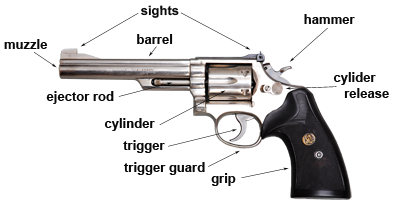
Firearm Ammunition
Handguns are capable of firing various types of ammunition, each designed for different purposes. Here are some common types of handgun ammunition:
- Full Metal Jacket (FMJ): This is one of the most common types of ammunition. FMJ bullets have a soft metal core (usually lead) encased in a harder metal jacket, typically made of copper. They are designed for target shooting, training, and general-purpose use.
- Hollow Point (HP): Hollow point bullets have a concave shape at the tip, which causes them to expand upon impact. This expansion creates a larger wound channel, making hollow points more effective for self-defense and law enforcement use. They are designed to maximize stopping power and minimize overpenetration.
- Jacketed Hollow Point (JHP): Jacketed hollow points are similar to hollow points but have a metal jacket surrounding the lead core. This design enhances penetration and ensures reliable expansion upon impact. JHP ammunition is commonly used for self-defense purposes.
- Soft Point (SP): Soft point bullets have an exposed lead tip, with the rest of the bullet jacketed. They offer better expansion than FMJ rounds but less expansion than hollow points. Soft point ammunition is often used for hunting because it delivers controlled expansion and deep penetration.
- Wadcutter (WC): Wadcutter bullets have a flat front and are often used in target shooting competitions. They leave clean, precise holes in paper targets, making them popular among competitive shooters.
- Shotshell: Shotshells are cartridges loaded with small pellets (shot) or a single large projectile (slug). They are primarily used in handguns designed for close-range pest control, snake shot, or as a less-lethal option for self-defense.
- Frangible: Frangible bullets are made from compressed powder or sintered metal and are designed to disintegrate upon impact with hard surfaces. They are used in scenarios where overpenetration is a concern, such as indoor shooting ranges or close-quarters self-defense situations.
- Tracer: Tracer rounds have a pyrotechnic charge in the base that ignites upon firing, leaving a visible trace of the bullet’s trajectory. Tracer ammunition is primarily used for training and can be helpful in adjusting aim or observing bullet drop over distance.
These are just some of the common types of handgun ammunition available. The choice of ammunition depends on factors such as intended use (self-defense, target shooting, hunting), environmental considerations, and legal restrictions. It’s essential to select ammunition appropriate for your firearm and intended purpose and to follow all safety guidelines and legal regulations.
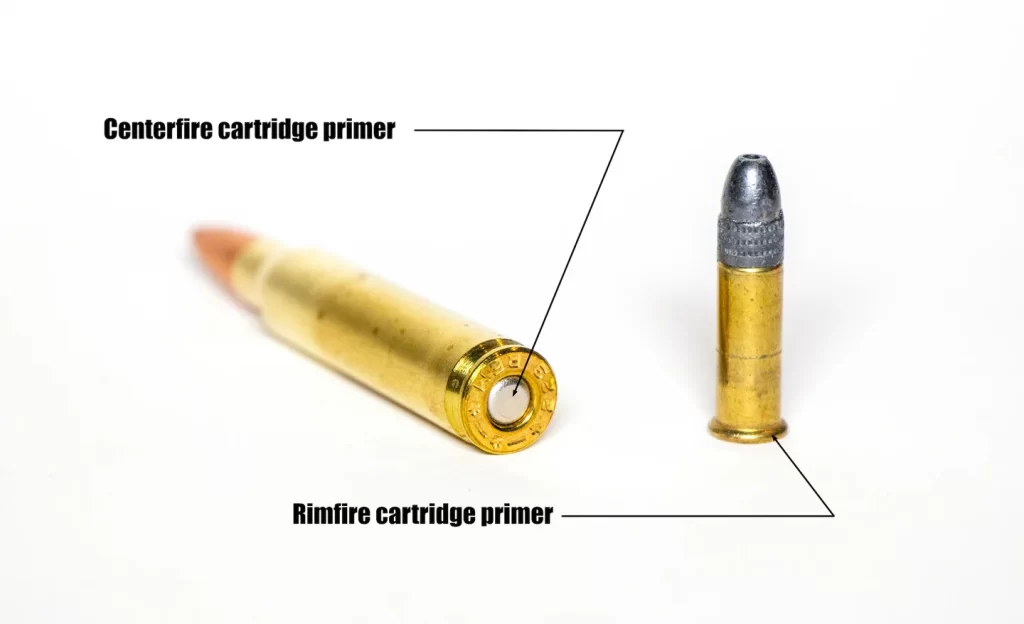
Definition of Caliber
The caliber of handgun ammunition refers to the diameter of the bullet and the inner diameter of the barrel of the firearm it is designed to be fired from. The caliber is typically measured in either inches or millimeters. Here are some common calibers for handguns and their differences:
- .22 LR (Long Rifle): This is one of the smallest and lightest calibers commonly used in handguns. It’s popular for target shooting, plinking, and small game hunting due to its low recoil and relatively low cost.
- 9mm: Also known as 9x19mm Parabellum or 9mm Luger, this is one of the most popular handgun calibers worldwide. It offers a good balance of stopping power, manageable recoil, and magazine capacity, making it suitable for self-defense, law enforcement, and target shooting.
- .357 Magnum: This is a powerful revolver cartridge known for its high velocity and stopping power. It’s commonly used in revolvers for self-defense, hunting, and law enforcement applications.
- .40 S&W (Smith & Wesson): Developed as a law enforcement cartridge, .40 S&W offers more power than 9mm while still allowing for manageable recoil. It’s used in both semi-automatic pistols and some subcompact and compact handguns.
- .45 ACP (Automatic Colt Pistol): This is a large, heavy bullet with relatively low velocity but significant stopping power. It’s popular among enthusiasts and professionals for its effectiveness in self-defense and law enforcement roles.
- .38 Special: Another popular revolver cartridge, .38 Special is known for its manageable recoil and versatility. It’s commonly used for self-defense, target shooting, and in some cases, concealed carry.
- .44 Magnum: This is a powerful and high-recoil revolver cartridge primarily used for hunting, handgun hunting, and as a backup sidearm for outdoorsmen in areas where dangerous wildlife is a concern.
- 10mm Auto: Originally developed for the FBI, 10mm Auto offers high velocity and stopping power. It’s used in both semi-automatic pistols and some hunting handguns for self-defense and hunting purposes.
These are just a few examples of handgun calibers, and there are many more available, each with its own characteristics and intended uses. When selecting a handgun caliber, factors such as intended use, recoil tolerance, ammunition availability, and personal preference should all be considered.
Handgun vs a Long Gun: What’s the difference?
A handgun is a firearm designed to be operated and fired with one hand. It typically has a relatively compact size compared to long guns (rifles and shotguns), making it easier to carry and handle. Handguns come in various forms, including revolvers and semi-automatic pistols, and are commonly used for self-defense, law enforcement, military, recreational shooting, and hunting. They usually have a barrel length shorter than 16 inches and are intended to be fired while held in one hand, although some models may support two-handed shooting techniques. Handguns are subject to specific legal regulations and restrictions in many jurisdictions.
The main differences between a handgun and a long gun lie in their design, size, and typical usage:
Design and Size:
- Handgun: Handguns are designed to be operated and fired with one hand. They typically have shorter barrels and overall lengths compared to long guns, making them more compact and easier to carry in holsters or concealed.
- Long Gun: Long guns are designed to be shouldered and fired with both hands. They usually have longer barrels and stocks, providing better accuracy and stability when aiming. Long guns include rifles and shotguns.
Usage:
- Handgun: Handguns are often used for self-defense, concealed carry, law enforcement, and as backup weapons. They are also popular for recreational shooting, target practice, and competitions.
- Long Gun: Long guns are commonly used for hunting, sport shooting, marksmanship competitions, and in military and law enforcement applications. They offer greater accuracy and stopping power over longer distances compared to handguns.
Firing Mechanisms:
- Handgun: Handguns can have various firing mechanisms, including revolvers and semi-automatic pistols. Revolvers have a rotating cylinder that holds cartridges, while semi-automatic pistols use a sliding action to load the next round from a detachable magazine.
- Long Gun: Long guns typically have more diverse firing mechanisms, including bolt action, lever action, pump action, and semi-automatic. These mechanisms vary in how they chamber and fire cartridges and can offer different rates of fire and reloading methods.
Legal Considerations:
- Handgun: Handguns are subject to specific legal regulations and restrictions in many jurisdictions, particularly regarding ownership, carrying, and purchasing. Background checks and permits may be required to own or carry a handgun.
- Long Gun: Long guns are also subject to legal regulations but may have different requirements depending on the jurisdiction. In some places, long guns may have fewer restrictions compared to handguns, particularly regarding ownership and carrying.
Overall, while handguns and long guns share some similarities as firearms, they serve different purposes, have distinct designs, and are subject to different legal frameworks.
Permits and Licensure:
The requirement for permits or licenses for firearms, besides handguns, varies significantly depending on the country, state/province, and sometimes even city or locality. Here’s a general overview:
1. Long Guns:
- In some jurisdictions, there are no permits required to purchase or own most long guns (rifles and shotguns). Individuals can typically buy long guns from licensed firearms dealers after passing a background check.
- However, in certain regions, there may be permits or licenses required for specific types of long guns, such as certain semi-automatic rifles or high-capacity shotguns.
- It’s essential to check local firearms laws and regulations to understand any permit requirements for long guns in your area.
2. Special Categories:
- Some jurisdictions may require permits or licenses for certain types of firearms beyond handguns and long guns. This could include firearms such as fully automatic weapons, short-barreled rifles or shotguns, or other restricted categories.
- In many cases, ownership of these firearms may be heavily regulated, requiring extensive background checks, approval from law enforcement agencies, and compliance with additional requirements.
3. Storage and Transportation:
- Even in areas where no permits are required to own long guns, there may be regulations regarding the storage and transportation of firearms. This could include requirements for safely storing firearms when not in use and rules for transporting firearms in vehicles.
4. Background Checks:
- Regardless of permit requirements, background checks are often mandatory for purchasing firearms, including long guns, from licensed dealers in many jurisdictions. These checks are typically conducted through the National Instant Criminal Background Check System (NICS) in the United States or similar systems in other countries.
5. Exceptions:
- There may be exceptions to permit requirements for certain categories of individuals, such as law enforcement officers, military personnel, or individuals with specific occupational needs. Additionally, there may be exemptions for antique firearms or firearms held for historical or collector purposes.
It’s crucial to thoroughly research and understand the firearms laws and regulations in your area to ensure compliance with all legal requirements regarding permits, licenses, ownership, storage, and transportation of firearms. Laws and regulations can vary widely between different jurisdictions, so what applies in one location may not necessarily apply in another.
Traveling with a Firearm
Traveling with a firearm requires careful planning to ensure safety and compliance with legal regulations. PLEASE NOTE: If you DO NOT HAVE A CONCEALED CARRY PERMIT, do not have a loaded firearm in your vehicle, especially on your person (open carry). A loaded, or even an unloaded firearm not properly stowed can be considered a concealed weapon once you enter your vehicle. Store it properly to avoid legal ramifications.
Resources on where you can take your firearm and where you cannot can be found HERE.
Here are steps to help you travel with your firearm safely and legally:
- Research Laws and Regulations: Before traveling with your firearm, thoroughly research the firearms laws and regulations of the places you will be visiting. This includes federal, state/provincial, and local laws. Pay attention to regulations regarding firearm transportation, possession, and carrying in both your departure and destination locations.
- Check Airline Policies: If you’re traveling by air, review the policies of your airline regarding firearms transportation. Airlines have specific rules and procedures for checking firearms as baggage. Contact the airline in advance to understand their requirements and any necessary paperwork.
- Use a Lockable Gun Case: When traveling with a firearm, always transport it in a lockable gun case or container specifically designed for firearms. Ensure the case is sturdy, secure, and lockable with a key or combination lock. The case should fully enclose the firearm and prevent unauthorized access.
- Unload and Secure the Firearm: Before packing your firearm, ensure it is unloaded. Remove all ammunition from the firearm and pack it separately from the firearm itself. Double-check to confirm that the firearm’s chamber and magazine are empty. Secure the firearm in the gun case to prevent movement or damage during transportation.
- Follow Transportation Regulations: Adhere to all transportation regulations regarding the handling and declaration of firearms. This may include notifying transportation authorities or airline staff about your firearm during check-in and following specific procedures for declaring firearms as checked baggage.
- Carry Necessary Documentation: Carry all required documentation for your firearm, including permits, licenses, registration certificates, and any other relevant paperwork. Make copies of these documents and keep them separate from the originals. Be prepared to present these documents if requested by authorities.
- Plan Your Route: Plan your travel route in advance to avoid areas where firearms possession may be restricted or prohibited. Be aware of any potential legal issues or challenges you may encounter while transporting your firearm through different jurisdictions.
- Store Safely at Your Destination: Upon arrival at your destination, store your firearm securely in accordance with local laws and regulations. This may include keeping it locked in a safe or secure storage location when not in use.
- Know Your Rights and Responsibilities: Familiarize yourself with your rights and responsibilities as a firearm owner and traveler. Be prepared to comply with law enforcement instructions and cooperate with authorities if questioned about your firearm during your travels.
- Stay Informed and Updated: Stay informed about any changes to firearms laws and regulations in your area and the places you plan to visit. Keep up-to-date with any updates or advisories from relevant authorities regarding firearm transportation and possession.
By following these steps and exercising caution and diligence, you can travel with your firearm safely and legally while minimizing the risk of legal issues or complications. Always prioritize safety, compliance with regulations, and responsible firearm handling practices when traveling with a firearm.
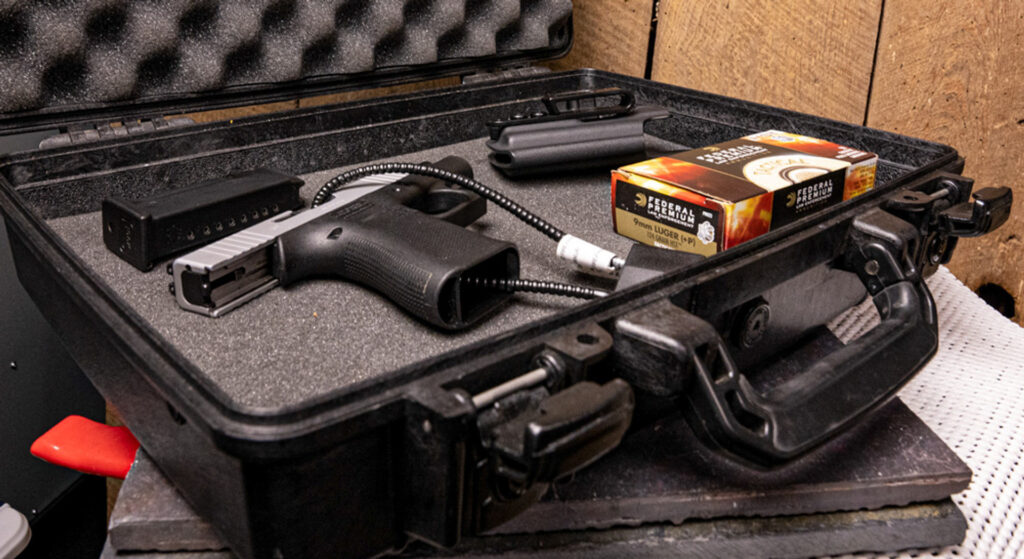
How to Clean Your Firearm
Cleaning your pistol properly is essential for maintaining its performance, reliability, and longevity. This LINK is for a generalized video on cleaning your pistol. Here’s a general guide on how to clean your pistol:
1. Gather Your Cleaning Supplies:
- Gun cleaning solvent or oil
- Bore brush (appropriate caliber)
- Cleaning patches or cloth
- Cleaning rod or bore snake
- Nylon or brass cleaning brush
- Toothbrush or small brush for detail cleaning
- Cotton swabs
- Gun lubricant or oil
- Gun cleaning mat or cloth to protect your work surface
2. Ensure Safety:
- Before starting, ensure your firearm is unloaded. Remove the magazine (if applicable) and visually and physically inspect the chamber to ensure it is empty. Engage the safety mechanism if your pistol has one. Most firearm accidents happen when people “think” the firearm is unloaded!
3. Disassembly:
- Disassemble your pistol according to the manufacturer’s instructions. Refer to your firearm’s manual for specific disassembly steps.
- Remove the slide, barrel, recoil spring, and other easily removable parts.
3. Clean the Barrel:
- Attach the appropriate caliber bore brush to the cleaning rod.
- Apply gun cleaning solvent or oil to the bore brush.
- Insert the bore brush into the barrel from the chamber end and push it through several times to loosen fouling and debris.
- Remove the bore brush and attach a cleaning patch or cloth to the cleaning rod.
- Run the cleaning patch through the barrel to remove loosened debris. Repeat with clean patches until they come out clean.
- Inspect the barrel to ensure it is clean and free of fouling.
4. Clean the Slide and Frame:
- Use a nylon or brass cleaning brush dipped in solvent to scrub the slide, frame, and other metal parts of the pistol.
- Pay attention to areas prone to fouling, such as the breech face, extractor, and rails.
- Use cotton swabs or a toothbrush to clean hard-to-reach areas and crevices.
5. Clean and Lubricate Moving Parts:
- Apply a small amount of gun lubricant or oil to moving parts such as the slide rails, barrel hood, and trigger mechanism.
- Use a cotton swab or cloth to apply lubricant sparingly and wipe off any excess.
6. Reassembly:
- Reassemble your pistol in the reverse order of disassembly. Ensure all parts are properly aligned and seated.
7. Function Check:
- Perform a function check to ensure your pistol is operating correctly after reassembly. Check the trigger, slide, and safety (if applicable) to ensure they function properly.
8. Final Inspection:
- Once reassembled, visually inspect your pistol to ensure it is clean, lubricated, and free of any visible debris.
Regular cleaning and maintenance are crucial for keeping your pistol in optimal condition. Follow these steps regularly after shooting sessions or as recommended by the manufacturer to ensure the reliability and performance of your firearm.
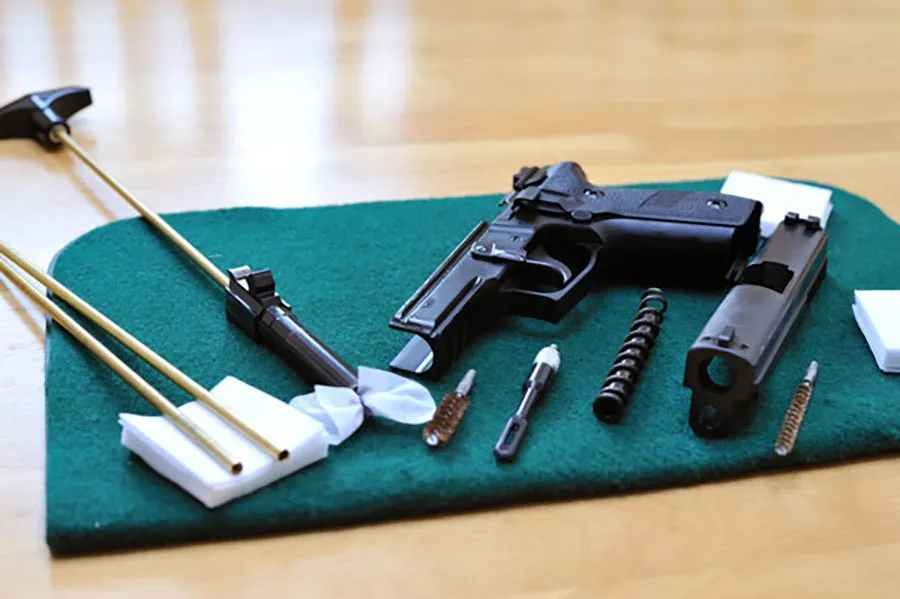
Firearm and Handgun Laws
Owning a firearm comes with important responsibilities, including understanding and adhering to applicable laws and regulations, ensuring safety, and maintaining proficiency in handling and storage. Get your legal resources and free concealed carry guide HERE!
Below are some basics of owning a firearm:
Know and Understand Applicable Laws and Regulations:
- Familiarize yourself with federal, state/provincial, and local laws regarding firearm ownership, possession, transportation, and use.
- Understand requirements for purchasing firearms, obtaining permits or licenses, and registering firearms in your jurisdiction.
- Stay informed about any changes or updates to firearms laws and regulations that may affect you as a gun owner.
Safety First:
- Always treat every firearm as if it is loaded, even if you know it is unloaded.
- Keep firearms securely stored and inaccessible to unauthorized individuals, especially children. If your firearm is easily accessible by ANYONE other than yourself, you can be held liable for the damage it incurs! Keep it locked and or hidden!Follow the basic rules of firearm safety, including keeping your finger off the trigger until ready to shoot, pointing the muzzle in a safe direction, and knowing your target and what is beyond it.
- Attend a firearms safety course or seek training from a qualified instructor to learn proper handling, shooting techniques, and safety protocols.
Regular Maintenance:
- Clean and maintain your firearms regularly to ensure reliability and performance.
- Follow manufacturer recommendations for cleaning, lubricating, and inspecting your firearms.
- Check for wear and damage, and address any issues promptly to prevent malfunctions or accidents.
Secure Storage:
- Store firearms in a secure location, such as a locked gun safe, cabinet, or vault, when not in use.
- Use gun locks or cable locks to prevent unauthorized access to firearms.
- Store ammunition separately from firearms and in a locked container or safe.
Training and Proficiency:
- Practice regularly with your firearms to maintain proficiency in handling and shooting.
- Stay informed about new techniques, technologies, and developments in firearms and shooting sports.
Responsible Ownership and Use:
- Be a responsible and ethical gun owner by adhering to safety guidelines, respecting others’ rights, and using firearms for lawful purposes.
- Educate yourself about the ethical and legal considerations of firearm use, including self-defense, hunting, and recreational shooting.
- Be mindful of the impact of your actions as a gun owner on your community and society at large.
Owning a firearm is a significant responsibility that requires knowledge, skill, and commitment to safety and legality. By understanding and adhering to these basics of firearm ownership, you can ensure safe and responsible gun ownership while enjoying the benefits of firearms for self-defense, recreation, or other lawful purposes.
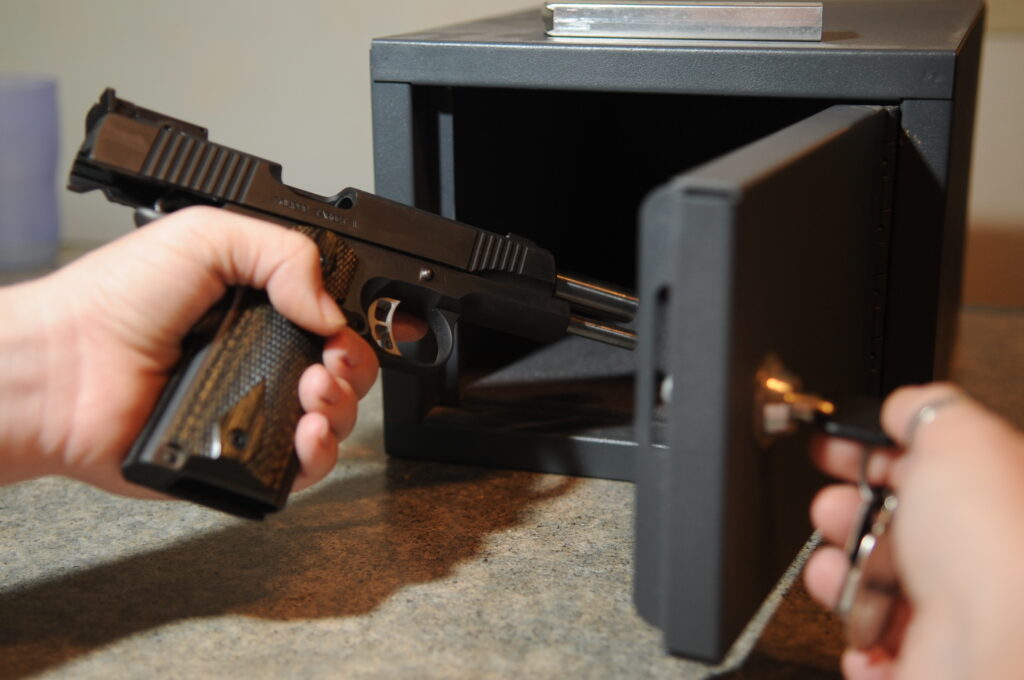
Legalities of “Warning Shots” for Self-Defense
The legality and advisability of firing warning shots in self-defense situations vary depending on the jurisdiction and the specific circumstances. Remember, bullets don’t just disappear, they always get stopped one way or another. If you’re in the home, consider what or WHO may be above you or beyond the object you’re firing into. In regards to shooting the air, the bullet has to come down sometime and it will do so at about the same speed it left the barrel.
In general, it’s important to understand that discharging a firearm, even for warning purposes, carries serious legal and safety implications. Here are some considerations:
- Legal Implications: In many jurisdictions, firing a warning shot is treated the same as firing at a person. This means you could potentially face criminal charges, including reckless endangerment or unlawful discharge of a firearm, depending on the laws in your area.
- Safety Concerns: Warning shots pose significant safety risks. A fired bullet can travel a long distance and may hit unintended targets or cause property damage. Additionally, the act of firing a warning shot may escalate the situation and increase the likelihood of violence.
- Effectiveness: Warning shots may not effectively deter an attacker and could provoke them further. In a high-stress situation, it may be difficult to accurately fire a warning shot, increasing the risk of unintended consequences.
- Legal Justification for Use of Force: In most jurisdictions, the use of force in self-defense is justified only when there is an imminent threat of death or serious bodily harm. If you have the legal right to use deadly force in self-defense, it is generally advisable to use it only as a last resort and with the intent to stop the threat, rather than to warn or intimidate.
- Alternative Options: Instead of firing warning shots, consider other options for de-escalating the situation and protecting yourself, such as verbally warning the attacker to stop, seeking cover or retreat if possible, and using non-lethal self-defense tools or techniques.
Ultimately, the decision to fire a warning shot should be made carefully and with full awareness of the legal and safety implications. It’s essential to understand the laws and regulations regarding the use of firearms for self-defense in your jurisdiction and to prioritize the safety of yourself and others in any self-defense situation. If you find yourself in a threatening situation, it’s generally best to seek to resolve it through non-violent means or by using force only as a last resort to protect yourself or others from imminent harm.
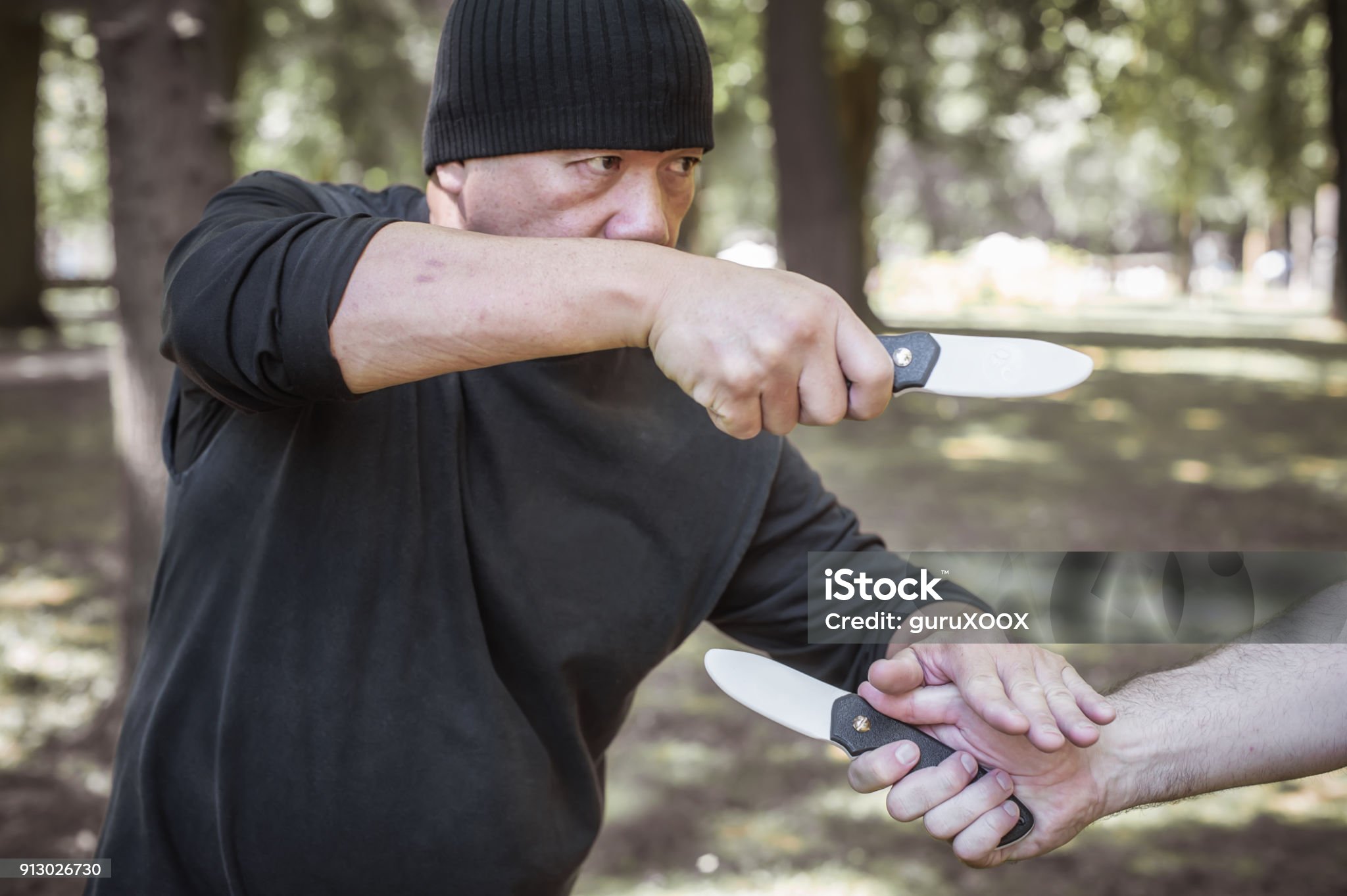
Pre-Attack Indicators
There are common signs that will indicate when someone is likely going to attack you. Paying attention to visual and audible cues and maintain situational awareness is the key to protecting yourself. Do NOT ignore these indicators. Even if you are wrong about them, at least you will have stayed safe. BUT if you are correct and choose to ignore them, you WILL pay for your ignorance.
How will I know if someone is about to attack me?

What is the MOST important aspect of preventing an attack from affecting you?
DISTANCE. Being too close to an attacker reduces your reaction time and makes the likelihood of being hit, stabbed, grabbed, taken-down, or shot very high. The further from the threat you are, the safer you are. It’s incredibly simple. With more distance comes the ability to react more appropriately to whatever they attempt. When in a situation with anyone who is potentially hostile, distance is king. The opposite is also true. If you want to be the attacker, you must “close the gap”. At such a close range, typically whoever lands the first surprise attack will dominate.
What are the signs of a pending attack?
If you cannot get to a safe distance or you are still assessing the situation, you’ll want to take note of the mannerisms they begin to display. Once you see one, it’s likely you will see others. The keys to attacking effectively are the element of surprise and intimidation. But you may definitely meet an aggressive person willing to just “jump into it”. Impulse Tactical Self-defense courses prepare you for just that scenario. Prevention is not always viable, so we teach you how to neutralize these scenarios to mitigate damage and survive.
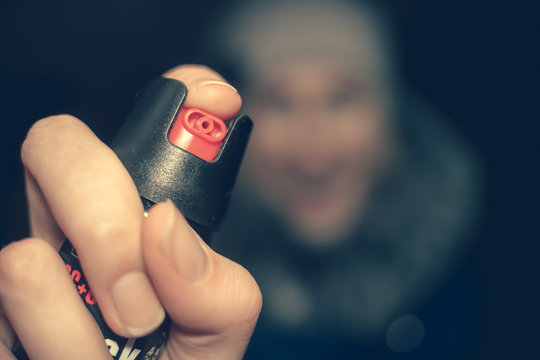
What are the pre-attack indicators?
Pre-attack indicators are behavioral cues or signs that may precede a physical assault or threatening encounter. Recognizing these indicators can provide valuable warning signals and enable individuals to take preventive action or prepare for potential self-defense situations. Here’s a list of pre-attack indicators:
- Aggressive Posturing: Aggressive body language such as clenched fists, puffed-up chest, or an aggressive stance can indicate hostile intentions.
- Intense Staring: Prolonged or intense staring, particularly with narrowed eyes or a fixed gaze, may signal potential aggression or a readiness to initiate an attack.
- Verbal Threats: Threatening language, insults, or hostile comments directed towards you or others can indicate escalating aggression.
- Invasion of Personal Space: Encroachment into your personal space, such as standing too close or blocking your path, may be a precursor to a physical confrontation.
- Unpredictable Behavior: Erratic or unpredictable behavior, including sudden changes in mood, agitation, or irrational movements, can suggest potential danger.
- Weapon Display: The display or brandishing of weapons, such as a knife, gun, or improvised weapon, is a clear indicator of imminent threat.
- Physical Signs of Agitation: Visible signs of agitation or nervousness, such as pacing, fidgeting, or clenched jaw, may indicate heightened emotional arousal and potential aggression.
- Preparation Movements: Suspicious movements suggesting preparation for an attack, such as reaching into pockets, adjusting clothing, or adopting a fighting stance, should be noted.
- Gang Mentality: Group dynamics characterized by aggressive posturing, verbal taunting, or attempts to intimidate can signal an increased risk of violence.
- Blocking Exits: Deliberate actions to block or restrict your ability to leave an area or escape can indicate hostile intent and should be taken seriously.
- Flanking Maneuvers: Covert attempts to position themselves strategically around you, such as moving to your blind spots or surrounding you, may precede an attack.
- Sudden Changes in Behavior: Abrupt changes in behavior, such as becoming overly friendly after initial hostility or attempting to lure you into a secluded area, can be red flags.
- Target Assessment: Signs of sizing you up or assessing your vulnerability, such as scanning your body, observing your movements, or making note of valuables, may precede a robbery or assault.
- Aggressive Gestures: Gestures indicating readiness to strike, such as raised fists, finger-pointing, or gesturing towards concealed weapons, are clear indicators of imminent danger.
- Facial Expressions: Hostile or predatory facial expressions, such as a clenched jaw, narrowed eyes, or a predatory grin, can signal impending aggression.
Recognizing these pre-attack indicators requires heightened situational awareness and the ability to trust your instincts. If you observe one or more of these indicators, it’s important to take immediate action to remove yourself from the situation if possible or prepare to defend yourself if necessary.
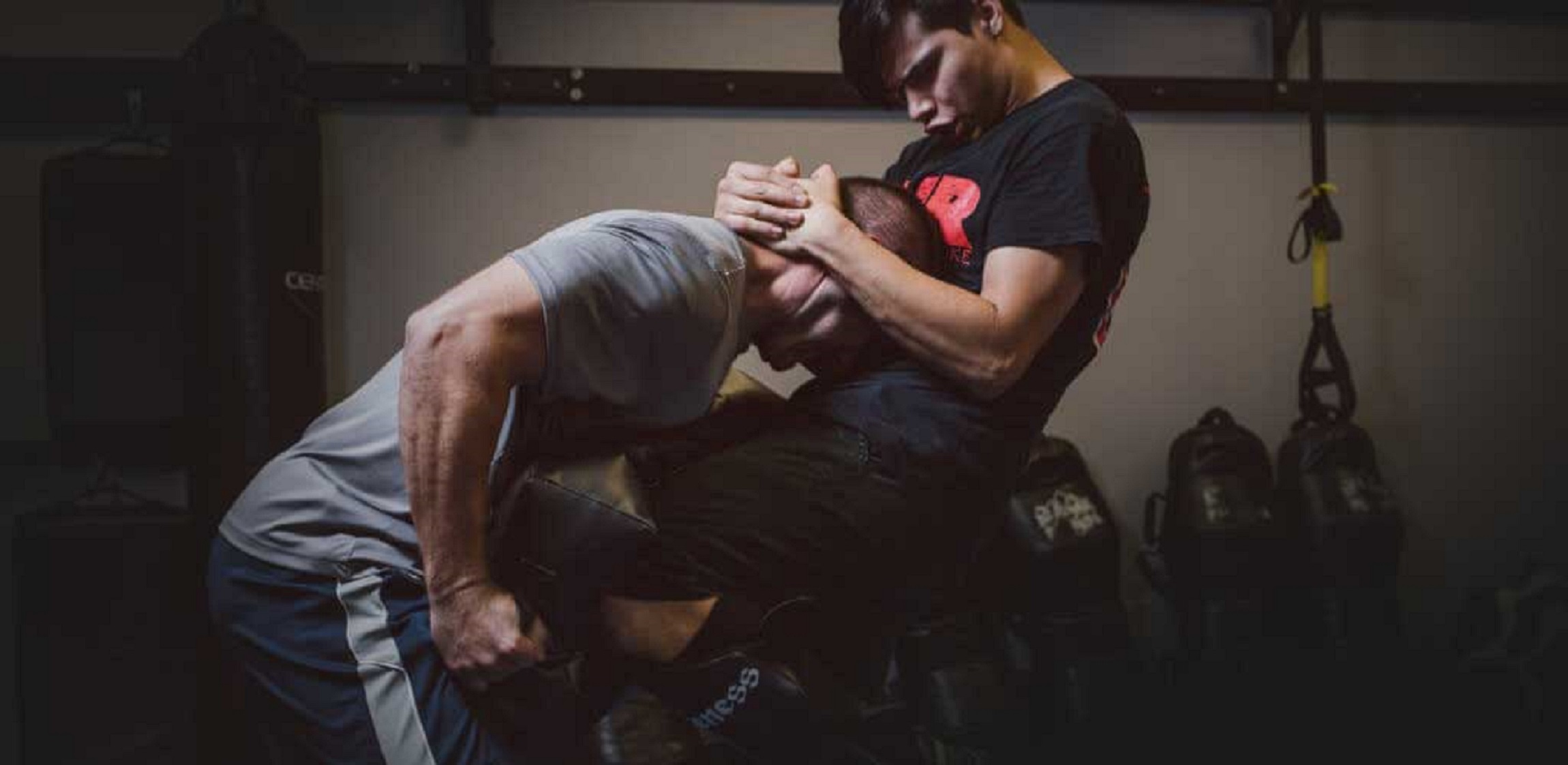
Prevention Tips for Self-Defense
The implementation of self defense tips is THE most important component of preventing a violent encounter from occurring. Becoming vigilant and keen on preventative techniques and knowledge, you will minimize your risk of being a victim of violence exponentially! Much of this can be done with little or no effort. You simply need to acknowledge and consider them.
Nobody wants to be paranoid. We do not wish for you to become paranoid, however, the more you research self-defense and see what’s possible, it’s hard not to view the world differently. Be sure to maintain that balance of light and dark. Be prepared to make the decisions needed to protect yourself and whoever you care about most. One day, you may need to do something controversial as an act of defense, especially preventative, or you may need to get physical and neutralize a threat. BE PREPARED.
At Impulse Tactical, our Self-Defense classes do not just teach the tactics of how to fight, we instruct on prevention and escape as they are often under-emphasized. The physical aspect is very important, but not the most important. It’s the stress… learning to deal with this and understand it is vital to becoming a protector, either of yourself or others. Get in on a class now and experience how vulnerable you actually are.

Self-Defense Tips to Consider for Every Day Prevention
- Travel Safety:
- Plan your routes in advance, opting for well-lit and populated areas.
- Avoid traveling alone, especially at night.
- Share your itinerary with a trusted friend or family member.
- Use reliable transportation methods and verify the identity of drivers (e.g., rideshare apps).
- Keep your belongings secure and avoid displaying valuables in public.
- Home Security:
- Install sturdy locks on doors and windows.
- Use motion-sensor lights to illuminate dark areas around your home.
- Keep bushes and shrubs trimmed to eliminate potential hiding spots for intruders.
- Consider installing a security system with cameras and alarms.
- Always lock doors and windows when leaving home, even for a short time.
- Personal Safety Habits:
- Stay alert and aware of your surroundings at all times.
- Trust your instincts and avoid situations or individuals that make you feel uneasy.
- Walk confidently and with purpose, making eye contact with others.
- Keep a safe distance from strangers and maintain personal space.
- Practice good posture and assertive body language to deter potential threats.
- Digital Safety:
- Be cautious when sharing personal information online, including your location.
- Use privacy settings on social media platforms to control who can access your information.
- Avoid posting about travel plans or being away from home for extended periods.
- Use strong, unique passwords for online accounts and enable two-factor authentication where possible.
- Be wary of phishing scams and fraudulent websites requesting personal information.
- Conflict Resolution Skills:
- Practice active listening and effective communication to de-escalate conflicts.
- Stay calm and composed, avoiding escalating arguments or confrontations.
- Seek compromise and find mutually beneficial solutions when conflicts arise.
- Apologize if necessary and be willing to walk away from a confrontation if it cannot be resolved peacefully.
- Use assertive language and set clear boundaries to assert your rights without being aggressive.
- Self-Defense Training:
- Enroll in self-defense classes to learn practical techniques for protecting yourself.
- Practice situational awareness and threat assessment during training sessions.
- Familiarize yourself with vulnerable points on the body and effective striking techniques.
- Practice verbal assertiveness and boundary-setting skills in simulated scenarios.
- Regularly review and reinforce learned self-defense skills to maintain proficiency.
- Emergency Preparedness:
- Develop a personal safety plan that includes escape routes and emergency contacts.
- Carry a charged mobile phone with emergency contacts programmed and accessible.
- Consider carrying personal safety devices such as a whistle, pepper spray, or personal alarm.
- Know how to access emergency services and provide relevant information quickly.
- Stay informed about local emergency procedures and resources available in your area.
- Risk Avoidance:
- Avoid high-risk situations and environments known for criminal activity or violence.
- Limit alcohol consumption and avoid recreational drug use, as they can impair judgment and increase vulnerability.
- Be cautious when accepting invitations to secluded or unfamiliar locations.
- Trust your intuition and exit situations that feel uncomfortable or unsafe.
- Choose reputable establishments and avoid walking alone in dimly lit or deserted areas.
- Physical Fitness:
- Maintain physical fitness and stamina to enhance your ability to defend yourself if necessary.
- Incorporate strength training and cardiovascular exercises into your fitness routine.
- Practice self-defense techniques regularly to improve muscle memory and agility.
- Develop flexibility and balance through stretching and yoga exercises.
- Consider martial arts or combat sports training to build confidence and physical resilience.
- Community Involvement:
- Build relationships with neighbors and community members to foster a sense of solidarity and mutual support.
- Participate in neighborhood watch programs or community safety initiatives.
- Stay informed about local crime trends and share information with others to promote awareness.
- Advocate for improved safety measures in your community, such as better lighting or increased police patrols.
- Report suspicious activity or concerns to local authorities promptly.
Implementing these specific self-defense prevention strategies can empower individuals to minimize risks and enhance their safety in various situations.
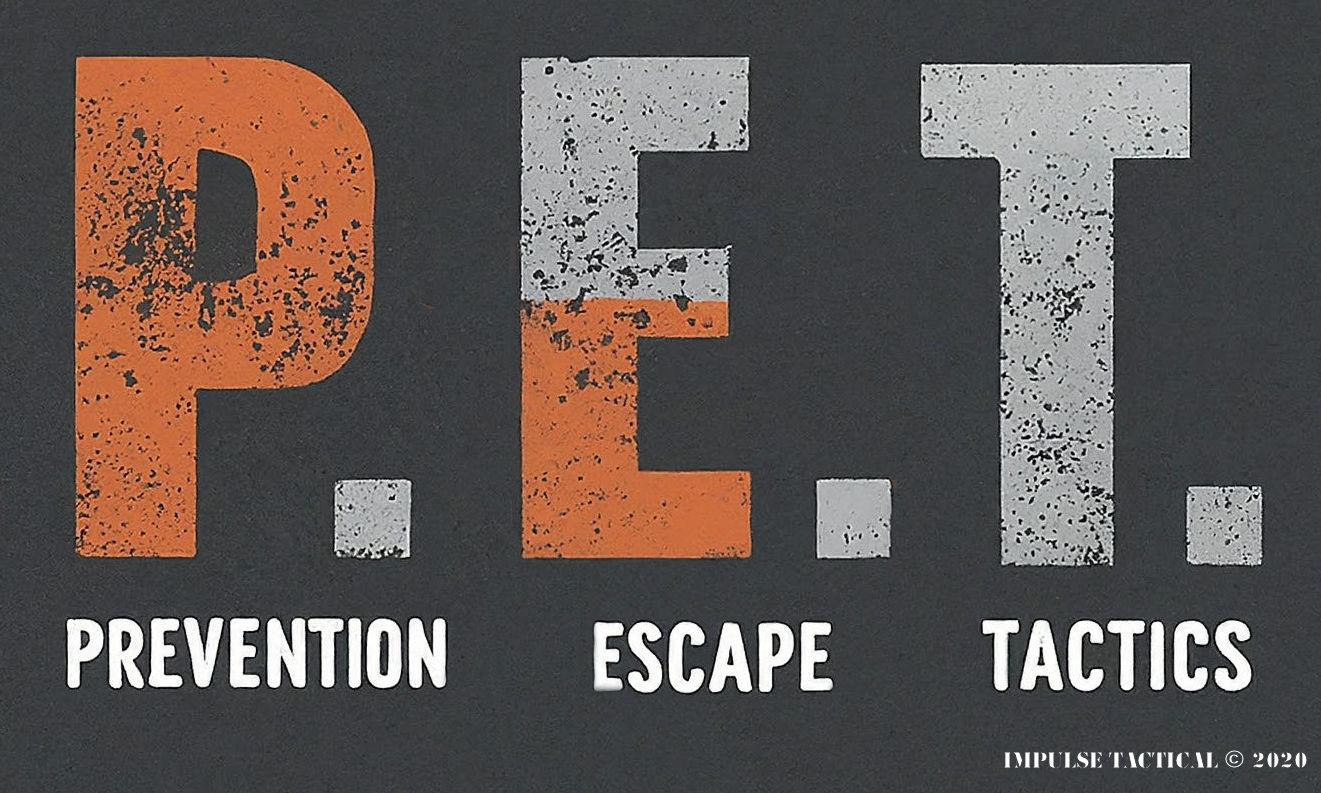
3 Things You Need To Know For Self-Defense: P.E.T.
The 3 Things You Need To Know For Self-Defense begins with the proactive use of Prevention. If you are unable or unsuccessful with preventing an attack, your primary goal will be to Escape. This is the simple idea of creating distance and leaving. Lastly, if you could not prevent and have trouble escaping, you must escalate to Tactics. Typically consisting of striking vital areas quickly and powerfully or by performing a technical maneuver to facilitate a mode of escape. Once you have escaped to a safe distance or position, you revert back to prevention. Now let’s find out what real self-defense is and how the P.E.T. acronym works!
REAL Self-Defense Starts with P.E.T.: Prevention, Escape, & Tactics
Self-Defense is not some sport you have time to prepare and study for such as Boxing, Muay Thai or Grappling (BJJ or Wrestling). It’s not two individuals voluntarily going head to head in an octagonal ring or on the street trying to knock each other out. And Self-Defense is DEFINTELY not a lone martial art (Karate, Brazilian Jiu-Jitsu, Kung Fu, Aikido, Judo). How do I know this? 20+ years practice and teaching, studying self-defense, and learning from the best tactical LEO and Military trainers.
Self-Defense is not a game… it’s SURVIVAL!
Martial arts wonderful and I recommend them to all and while you ABSOLUTELY gain attributes by regularly training in any one of the activities mentioned above, NONE of them teach “REAL SELF-DEFENSE”. Unfortunately, they all lack or contain certain aspects of training that may get you seriously injured or killed. Most, at least a good 80%, of the techniques or “moves” learned in any martial art are relatively useless for self-defense scenarios. To achieve success with them, you often need years or even decades of training. Fighting sports or martial arts often train for points or to remain engaged and leave out vital components of self-defense as we will discuss.
What is Self-Defense Exactly?
We define self-defense as “an involuntary conflict meant to harm you (or someone else), mentally or physically“. To help differentiate, a “voluntary” conflict would be any situation in which you have the opportunity to leave but opt to stay, hence permitting the conflict to resume. We call this “fighting”.
Although “fighting” is sometimes necessary for self-defense or to diffuse a situation, it’s not the main objective as we will only use it to facilitate escape. More on this to come. Voluntary conflicts often include common acts of pride or standing your ground. Consider a typical street fight or bar scuffle. But let’s not play semantics all day, let’s move forward!
Here is what real self-defense can look like…
- More than one attacker
- Weapons (knives / guns / clubs / chairs)
- Grappling match (and you’re winning) but they pull a knife and stab you in the spleen
- Home invasion at 2 a.m. by three (3) suspects
- Getting jumped by 2 guys at an ATM in broad daylight
- Bully coming to you in the hallway and sucker-punching the back of your head
- Getting caught in a convenience store robbery
- Your child being ripped from your arms
- Carjacking at gunpoint with your wife and kids in the car
- Drunk or High (drugs) individual getting in your face “just because you looked at them”
- Random mass shooting or mass knifing and you’re only exit is behind them
- Your ex (or current partner) catches you in bed with someone else and goes ballistic…
Time and Control: You don’t have any and you’ll need to earn it
In Self-Defense, there are no rules. You don’t decide when or where the attack happens. You don’t decide who you are with, if anyone. You don’t get to decide the time of day and whether or not you just got out of the shower or finished leg day. You don’t get to know if there will be weapons. You cannot choose the size, speed, agility, strength, or the amount of your attackers. You could be in a bathroom stall or on a ladder hanging Christmas lights. They don’t care if you just got dumped or just won the lottery.
You are typically NOT IN CONTROL when self-defense happens! It will not be convenient. You will almost always be caught off guard. Animals don’t usually pick fights if they don’t think they can win. A hidden or timely advantage (sneak attack) is common and being outmatched and overwhelmed should be expected.
You see, when it comes to being involved in a violent encounter, you usually DO NOT HAVE TIME to evaluate and assess the situation as someone watching the video afterwards would. If you did have time, it would be well spent trying to get away from danger. The retrospective analysis of violence gives us a view into a whole new world. Those looking in from the comfort of their phones and laptops have all the time in the world to TELL YOU what you did wrong and “HOW THEY WOULD’VE HANDLED IT”. Observing these types of videos is valuable insight into criminal and violent behavior. The point is, time is not on our side. No one will come to save you. Get the training you need to react properly and effectively.
Good luck to those who say, “I carry a gun, I’ll just shoot the bastard”. Sorry bro, no you won’t and I’m more than happy to prove that to ANYONE without this type of training. People with this specialized self-defense training do not say silly things like this. Ignorance is bliss.
How to Start Learning Self-Defense
What’s the answer for learning self-defense without years of martial arts or fight training? Simple and straight-forward CONCEPTS drilled in the correct way to force an effective natural reaction under stress. Scenario-based training helps reinforce concepts so you can “think on your feet”. Since we discovered the number of ways, positions, or conditions with which you can be attacked are endless, you couldn’t possibly train for every individual scenario. Hence our conceptual approach.
Concepts never change, but the ways you can be attacked are infinite…
With this, always remember the acronym “P.E.T.” as it stands for Prevention, Escape, and Tactics. Understanding the essence of these three CONCEPTS will aid in your survival. Remember we mentioned that most martial arts techniques are useless without years of training? With only a handful of basic techniques or strikes combined with the correct mentality, you can increase your probability of survival 10X practically over night. Remember, this is not a 1 vs 1 school yard fight we’re talking about…
Whether you’re a complete beginner, a body-builder or thin-mint, young or old, male or female, an experienced martial artist or marksman, it’s important to study real self-defense. There is always something to learn, new perspectives to be had, and new challenges to overcome.
The most important aspect of self-defense training will be the MENTAL. You must endure and acclimate to stress and learn tactics in a way that allows you to process and store them. At Impulse Tactical, we teach the fundamental movements & utilize stress as a catalyst for engraining those gross motor skills and concepts into your brain. This is how you will be able to retain this information forever, much like riding a bike, and it won’t take years of training.
Understanding the Stress of Self-Defense
Fight – Flight – Freeze
The “fight or flight” response is an auto-response from your body that, when under duress, will promote you to either run or fight, and in some cases, freeze in fear or confusion. Until you undergo the extreme stress of a life-threatening situation, you may not know what you will do, even if your “trained”. It’s incredibly easy and egotistical to say, “I would just do this”, but then the adrenaline and chemicals start flowing and you’re a popsicle… Our goal is to give you the tools and re-program your brains “OODA Loop” so that you definitely don’t FREEZE and you can either run away or fight intelligently.
Becoming familiar with this “stress” in a controlled environment will aid in your reaction. Often, experienced fighters or competitive grapplers have no issue engaging with another human because they know their capabilities. The ONLY issue with this is they may be overconfident and not know what to do now that a gun, knife, or another assailant is introduced to the mix because they don’t have it integrated in their “OODA Loop”. True self-defense requires us to consider all circumstances and throw out all rules of engagement and fairness.
What the heck is an OODA Loop?
O.O.D.A. Loop… this stands for Observe, Orient, Decide, & Act. This is an automatic process involved with performing tasks that we do every day without knowing it from making a sandwich to playing basketball. This process happens in an instant.
Think of driving a car and how automatic it is for experienced drivers. The way we can get around even without paying attention #don’ttextanddrive. We’ve driven so long that we observe the road instinctively, we orient ourselves towards and consciously recognize distance changes or protentional hazards, then subconsciously decide to brake (with the exact amount of force necessary), then proceed to actually act and depress the brake pedal just enough. Now think of a brand-new driver and careful and jerky they are with everything. That’s because they haven’t yet ironed out the OODA Loop. Time and Training (driving experience), allows for the OODA loop to become smooth, seamless, and thoughtless (subconscious).
Here’s the basic rundown of how it works for self-defense:
1. We observe something happening (a stimulus such as an attack or pre-attack indicator)
2. Then we orient ourselves to that stimulus (face it or consciously recognize it)
3. Once recognized (as a threat, per se), we can now decide how to proceed (run, punch, kick, scream)
4. And lastly, act on our decision (actually moving our feet or punching them)
Why is the OODA Loop important to know and how do I utilize it?
When training self-defense properly, we give our brain new instructions with which to “automatically run on”… new “code” if you will. One SECRET method (now formally secret) we use to prove how this works is we have students perform their most natural reaction to a scenario. At the end of a session or two, we present them with the same or similar scenario and see how they react with this new, developed, OODA Loop. We work to develop the observation of stress itself. Once you observe and orient (recognize) the stress, the can then decide and act much faster, no matter what’s actually causing the stress
On a more ADVANCED level, the OODA Loop can actually be used against someone as well. This is why you may “freeze” when caught off-guard. When you OODA Loop is consistently and constantly being disrupted, you never have the time to decide or act, hence the freeze or confusion. Pick-Pocketers use this to steal from you. They incessantly distract you with verbal and / or physical stimulus so it’s almost impossible to feel (observe) them reach into your pocket. You can literally watch them do it LIVE on-stage to people who already expect it! But the process is the same. This is why it’s so frustrating when people ask a second question before we answer the first one. Our OODA Loop keeps getting reset and we can never act.
SELF-DEFENSE TIP:
If you must engage or distract an attacker in order to escape, ask them a question. Immediately after, perform your strike or toss something towards their face. As they observe, orient, and decide to answer the question, disrupting that OODA Loop before or while they speak will create a brief state of disruption.
What are the 3 elements of self-defense?
Let’s dive into each of these P.E.T. components to fully grasp the idea and how to implement them.
PREVENTION
“Only you can prevent forest fires”… preventing a fire is a lot easier than escaping or extinguishing one.
Easily the most under-utilized, under-emphasized, and under-taught aspect of self-defense is the CONCEPT of Prevention. Everyone tends to shrug it off as “common sense” … but is it really common sense? Let’s find out, shall we?
If you practice prevention and incorporate it into your daily life, the chances of you ever being attacked are practically nil. Statistically, the USA is one of the safest countries, however, specific areas or cities push it up the ladder to make it appear otherwise. That doesn’t mean, however, you won’t be chosen as the unlucky winner in this crazy game of roulette. Becoming a victim of violence (involuntarily) is not as common as you think but it CAN and WILL happen anywhere, anytime. Just watch YouTube. Seriously. So many “unsuspecting” victims. And those are just the ones caught on camera!
Where does violence occur and how can we recognize it?
We often see violence amongst people arguing over lovers, road-rage, workplace drama, drunks, drug addicts, bullies, gangs, terrorism, domestic abuse, money problems, poverty, and so on. I mention these because implementing preventative measures requires you to recognize violence indicators and patterns. For example, how someone is “acting” and how someone is “dressed” can be such an indicator. There will be an entire article on this topic alone in the near future so look out for it!
Obviously not every preventative effort will work and not all are even achievable, but the CONCEPT stands. Live in a bad area? Move. Worried about walking past those two shady guys on the sidewalk? Cross the street. Worried about your partner finding out about the “other person”? Don’t let them find out (or just don’t cheat). Someone cut you off in traffic? Don’t flip them the bird and just let them go. See, it can be that simple.
Now, let’s take it up a notch and not be so ordinary. Disclaimer: These are only possible scenarios so please DO NOT BECOME PARANOID.
You’re on vacation and someone comes up to you asking for the time, what do you do? Some say “tell them the time”, but what about a scam where a coordinated effort to kidnap, rob, or attack you from behind takes place. Before you gave the person your full attention, did you bother to survey the immediate area in all directions to make sure it safe to stop and engage? What will you look for? Maybe the guy will pull a knife when you glance at your phone. Maybe he’ll steal your phone. I’m not recommending you become rude, just careful. Be cognizant of your surroundings.
Now you’re walking down the street and three guys are hogging the sidewalk. Should you walk street-side or building-side? Answer now… Well if you go building-side, there may be nowhere to run if they decide to engage. Going street-side allows plenty of escape or running room if needed. But what if you’re a 5′ tall girl by herself and there is a van on the street? Do you walk in-between them and the van? They could force you into van as you brushed right up against it… it’s best to have crossed the street, even if inconvenient.
Are we thinking now? We can “what if” all day but that’s the reality of self-defense. Anything can happen! No scenario can be deemed “unrealistic” or “not going to happen”.
True story: I was on vacation and walking with my wife, exiting the hotel parking lot. A group of teenagers (7 or 8) was approaching perpendicularly. Although they weren’t at the cross-section yet, we waited. I don’t prefer a group or male teenagers to be directly behind me. If it were a brigade of girl scout troops, it wouldn’t bother me to be in front, but that amount of teenage boys, dressed and acting as they were, was a red flag. As we trailed them, I noted they were very energetic. One of them brandished a knife and stowed it away shortly thereafter. Just a block away, turns out there was a fight between other teenagers they were going to attend. Multiple fights ensued yonder. The point is, if you say the wrong thing, at the wrong time, get in someone’s way, or become an inconvenience to a person with an advantage (6 friends and a knife), it could be you and the wife they turn attention towards.
SELF-DEFENSE TIP:
Someone is much more likely to “get in your face” or fight if they are with someone. With friends backing them up, people quickly become chest-pounders & “tough”. The way someone can react when by themselves vs. with others is astonishing. Avoid upsetting someone in a “group” setting.
Ever hear about the “knock-out game”? It’s a real trend ran by teenage thugs where they go up to random strangers, even in broad daylight, hitting them with one very hard punch to the back of the head in an attempt to knock them out. People have literally died. Keep aware of who is around you in all directions. Take notice of distance changes. Listen for audible clues such as rapid approaching foot-steps. Utilize natural reflections such as car or store windows to look behind you, especially in the event someone walks past you and stops suddenly to engage from the rear.
Here are some seemingly “common sense” ideas to consider in preventing violence for self-defense…
Going to an ATM at night? Really? A venue with a majority, alcohol-infused male populous, 20-30 years, old is likely to experience violence of some type. Scrolling social media on your way to the car is a sure way to be caught by surprise. Locking your doors AND windows at night, even if not on the 1st floor as someone can definitely scale DOWN to your balcony (trust me on this one). Don’t park in dark areas or walk alone at night. Avoid high-crime areas. Take a moment to look around and question anything that appears “out-of-place”. Exit the scene if you witness “bad” things happening around you.
Trust your INSTINCTS! If you see or hear something that makes you uncomfortable or question your safety, that’s your “Spidey-Sense” tingling. Do not ignore it.
Read true stories about kidnappings and violent encounters, learn about local scams or criminal trends in areas you live and visit. Learn ways to repel or discourage attackers from even targeting you. Having foresight and situational awareness will go a long way. Again, trust your INSTINCTS! The thing about prevention is that you may never know if it worked BUT YOU WILL DEFINETELY KNOW IF IT DIDN’T WORK.
ESCAPE
Time kills when you’re defending yourself in a life-or-death situation. The longer you stick around, the more opportunity the attacker(s) has to end or maim you. To mitigate damage, we must gain distance and escape.
In the event you cannot PREVENT an attack, the next step for self-defense is to ESCAPE. This CONCEPT is vital to survival. To keep it simple, your only objective, once a self-defense scenario begins, is escaping to safety (or to help someone escape to safety, if taking on the protector role). Your objective is NOT to engage UNLESS it is necessary to escape. That is covered in “tactics”.
Remember Fight or Flight? Some people will have the natural tendency to just FIGHT. This is where training comes in handy as it provides those “fighters” with an appreciation and understanding that self-defense is unpredictable. Their OODA Loop is when they feel attacked, they attack in response. While this may very well be necessary or downright satisfying, it may very well be their undoing.
Back to our FIRE analogy… you see a big fire, don’t get a fire extinguisher, get out. Decide to stay and “fight” the fire? It may just ignite a gas line or someone will open a window causing a backdraft and it’s over for you, Mr. Hero. Obviously, if you can neutralize the fire without an issue, go for it! But when you prioritize escape and remove yourself or others from the flames, they cannot hurt you. If you are not there, you will not be burned. If you don’t wrestle the guy with a knife, you won’t get stabbed.
The only time you should engage voluntarily (fight) is in the defense of someone else or to prevent someone’s initial attack. These are “tactics” and will be covered shortly.
Distance for Self-Defense
Distance is the key to escape in self-defense. If you are far enough away from something harmful, it cannot hurt you. Simple CONCEPT. Maintaining a safe distance of at least arm’s length will give you a substantial reactionary gap. Just keep in mind that distance is temporary! You can and will be pursued. That gap can become very small, very quickly. NEVER DO NOT STOP ESCAPING until the threat is no longer a threat. If at ANY time you feel in danger, continue distancing yourself, assuming you do not acquire aid (police, friends, safe place) in the meanwhile. WHATEVER IT MEANS TO YOU TO BE CONSIDERED “SAFE” IS WHAT YOU DO.
One general CONCEPT whilst escaping you must follow is to NEVER TURN YOUR BACK unless you are actively running away. Typically, it is recommended not to turn away until you are at least 5 feet away so that you are not immediately grabbed or struck from behind but there are always exceptions to this guideline. If you follow this concept, you observe what your attacker(s) is doing and can orient, decide, and act accordingly.
SELF-DEFENSE TIP:
In the case of escaping from an active shooter, move in a randomized and unpredictable pattern (zig-zag), not in a straight line. If available, get behind “cover” ASAP (something a typical bullet cannot penetrate such as concrete or metal).
TACTICS
Finally, how to beat someone up!
When all else fails, now we must utilize specific tactics against our attacker. Essentially, we do these ONLY to create opportunity for escape which will lead us back to prevention mode. This is the fire extinguisher for our FIRE analogy. Use it to clear a pathway between yourself and the doorway so you can escape.
What are some tactics to help me escape a self-defense situation?
Any chance you have to tactically disengage and get away, take it. Just run. In the event you are cornered, trapped, or physically controlled / restrained, getting to safety will be an challenge. We must learn how to break grips via leverage points, utilize distraction and off-balance to force them to release their hold, and use coordinated movement in our disengagement or exit strategy. Additionally, taking advantage of opportunities to prevent additional controls will be integral as you work towards escape.
Tactics such as screaming, shouting commands, de-escalation, hands up in front of you, circling your arms, swinging arms or kicking, pushing, wiggling like crazy are options that can bring attention, maintain distance, and provide opportunity for escape. Learning specific methods aside from these more common ones will provide you with the confidence to thwart their efforts to control you and the ability to create distance and buy time.
“T” for Tactics in Self-Defense
Tactics are any methods used to create an opportunity for escape. They do not always have to be “just enough” to get away, however. Our “T” for tactics expands to include TRAUMA, TECHNIQUES, & TERMINATION.
Trauma
The most basic of defenses, striking (TRAUMA) is the most useful tool available. It can be with you feet, hands, or head & with or without a weapon or self-defense tool. It can be anything from a mild inconvenience to a concussive blow or a cut with a knife. Truthfully, much can be accomplished with a simple, strategic strike to the eyes, throat, nose, or groin. As cliché as those sound, they can and WILL work in many instances. They may not debilitate them, but they can present you with a window of opportunity for escape, which is our main self-defense goal.
Remember, the longer you remain engaged, the more opportunity they have to apply tactics as well. You never know who and what you’re dealing with and you don’t want to find out. Always assume you are out-matched and you must vacate ASAP. This is the survival mentality.
SELF-DEFENSE TIP:
Never introduce a weapon into the fight you wouldn’t want used on you. If there wasn’t a knife before and you decide to use one, the possibility being stabbed just increased 100%. It’s ideal and highly recommended that you understand and train proper weapon use, defense, and retention! Yes, we do that too.
Attacking First: Preventing a Physical Attack Using TRAUMA
A physical “attack” is considered to be when someone’s intent to physically harm you begins. This can be up-close or from afar. The closer the opponent, the less reactionary-gap you will have. Early detection is key. Always maintain distance when engaged by a hostile. If the hostile is within “striking or grappling range”, it MAY be necessary to attack first (pre-emptively)… now be very mindful that this can and will be perceived as an illegal and aggressive action, not self-defense. Use at your discretion.
When and how you deploy offensive, pre-emptive tactics to prevent an initial strike or grab can be controversial. At Impulse Tactical, if you cannot escape easily, do it by force. Punch or kick them fast and hard with aggression. This is not to be confused with “fighting”, however, this is where fight training can become handy and necessary for self-defense!
Do not forget that distance and context is important. If someone charges at you from across the parking lot, there is little justification to run towards to them with a “dropkick”. Engaging even though no one is in immediate danger and you have a clear opportunity to depart will be considered voluntary and not self-defense. Let’s be clear on that. The lines will start to become grayed and these types of instances contain exceptions so proceed at your discretion based on the information available to you.
The more training you have, the more educated and mindful your decisions will become. Your OODA Loop won’t always end with “smash their face in”.
SELF-DEFENSE TIP:
Always do what you believe is necessary at the time if you believe bodily harm or death is immanent. Never hesitate. Proper training will give you the tools to hesitate less while making better decisions.
Techniques
“TECHNIQUES” often consist of grappling positions aimed at setting off-balance, taking someone down, or destroying a joint. For example, a wrist-twist or double-leg takedown. While these can be extremely useful, it’s important to consider their relevancy prior to implementation. While they can be very effective tactics, they can and do fail, prolonging the engagement and wasting valuable time. Techniques usually fail for two reasons:
1. The techniques was NOT relevant to the situation (when)
2. It was executed improperly (how)
Most techniques require specific details and training for proper application. Learning how and when to perform a technique takes time. Any technique learned in a self-defense class should be comprised of gross-motor movements with natural & easy to understand concepts.
Techniques learned in regular training are great skills that will compliment and supplement your self-defense tactics. Just make sure that you use the most relevant technique. The right technique, at the right time, to the right stimulus.
Advanced techniques will include how to handle an attacker in a scenario on the ground or controlling someone holding a knife. Understand P.E.T. and the Level 1 course material will prepare you. Other more specific techniques and control tactics will more ideal to practitioners who need to voluntarily engage control or neutralize aggressors (i.e. LEO’s, Military, Security, etc.)
Termination
“TERMINATION” is total neutralization of the threat. Deadly force. They can’t hurt you if they’re dead. This is when a crazed attacker charges you with a knife and won’t stop until he gets to you… No need to share methods of “un-aliving” someone. But within the realm of self-defense and the eyes of the laws that govern society, use only at your discretion. Study “use-of-force” and “reasonable force” laws for more information as well as general self-defense laws. But please, never allow the law to cause hesitation as it may get you killed. Defending yourself in trial can only happen if you’re alive! If you believe that taking this person’s life force is the ONLY way to stay alive in under those circumstances, do what you need to! Always do what you believe is necessary at the time to SURVIVE!
Training and education will aid you in making the best decision for your circumstances. The more training you acquire, the less likely you are to “over-react” and use unjustifiable force. The legalities of self-defense vary by locality and may not always appear “fair”. But as I keep saying, don’t be there and you’ll never have to worry about it! In the event you must severely injure, or kill an assailant, contact authorities and never say a word without a lawyer present. Literally, STFU and you’ll thank me later.
SELF-DEFENSE TIP:
Avoid the ‘FIGHT AFTER THE FIGHT”… the recovery in the hospital or legal battle that will surely ensue. Take this as motivation to hyper-focus on PREVENTION & ESCAPE. We put “Tactics” last for a reason as it should be the last resort. Integrate them into your life and start managing your own ego, pride, or anger issues. No lawsuits, no judges, no injuries to recover from… just going home with the family, eating good food, and being safe.
The GOAL of Self-Defense Training
Learning to survive any scenario possible, as quickly as possible, utilizing simple CONCEPTS and gross-motor or natural movements. Realistically, the more you know, the better training you have, and any advantages available to you will impact your decisions throughout the self-defense process. You can use anything at your disposal to win. It’s crucial we learn as much as we can about violence and real self-defense. The more familiar we become with self-defense, overall, the more subconscious it becomes as we program that “OODA Loop”.

At Impulse Tactical, we instill certain concepts, both physically and mentally, that will aid you in a self-defense encounter. Humans will undergo an extraordinary amount of stress unlike we’ve ever faced before, and it will be eye-opening to say the least. We must think about self-defense, train self-defense, and practice self-defense. Stay on your toes, incorporate training as often as you can, and take nothing for granted. One of the most basic classes to learn and practice these concepts in is Essential Self-Defense Level 1. With this class alone, you will instantly be much harder to victimize.
Remember, you may not be in control when an attack occurs. Stay alert and oriented. Know your exits. Become educated on PRE-ATTACK INDICATORS and INDICATORS OF VIOLENCE. Do not be a victim. Be proactive and informed. Become harder to kill. Become a regret for an assailant. Become a protector of those who need protecting. It doesn’t take years of martial arts or fighting experience to accomplish these goals. As one of my coaches, Kenny Bigbee Jr., says, “BE ELITE – You can’t always be THE best, but you can always be YOUR best”.
Our courses are typically 2-hours in length to provide time for learning and stress inoculation. We offer multiple courses to build upon, as well, to further your knowledge and skillsets. They are great for beginners and we have plenty of advanced materials for the “know-it-alls”.
What else can you do to prepare for self-defense?
You’ll never hear someone complain that they were “too ready” for something… you’ll only hear someone complain about not being ready enough!
Exercise, be in shape, be healthy, expose yourself to real violence (via the internet), or take up a martial art with regular training. These will all give you insight or attributes you can readily use at a moments notice. Never underestimate a prepared individual. Two types of people should be feared… someone who has nothing to lose & someone who is properly prepared.
READ THIS BLOG AGAIN! There is so much to unpack here. Seriously considering and understanding this material is essential to self-defense.
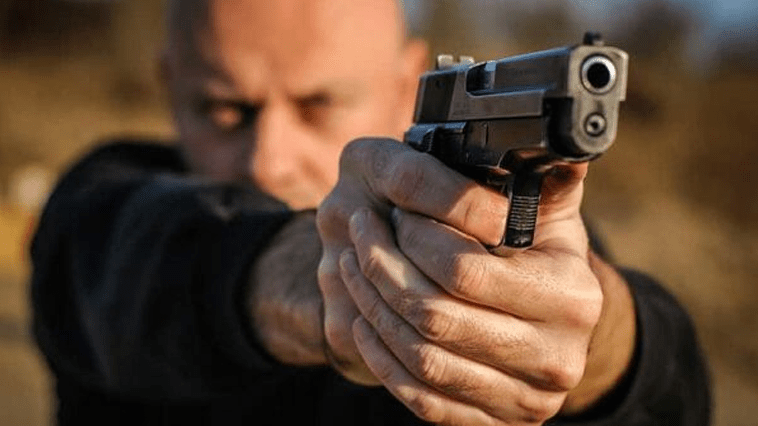
Should I Carry A Gun (CCW)?
Only if you feel it’s necessary. If you do, it is your OBLIGATION to obtain PROPER TRAINING to make you most proficient in the use of your firearm. This is to ensure safety to yourself as well as the public. Knowing how and when to use your firearm is crucial and will not be as simple as it seems.
Sign up for our Beginner Gun class or CCW course and educate yourself. No excuses for ignorance when it comes to being a responsible gun owner and carrier.
Primary Objectives for Self-Defense: Prevention & Escape
Having a handgun on your person is great, but it should ONLY be used as a last resort. That “last resort” can come mighty quickly. In the blink of an eye, you could go from walking the dog to deploying your pistol to protect you or others from a violent threat.
In order to make this a “last resort”, you must work to acquire Prevention & Escape tactics and knowledge. After all, if you can, theoretically, prevent a violent encounter from happening, your gun becomes useless. Learning the warning signs of violence or criminal activity can put you a step ahead of the rest and make you a more difficult target.
Learning how and when to escape is an integral part of self-defense. We cannot possibly prevent the infinite amount of scenarios that could happen, but we can be ready to react in a way to promotes safety by distance, a.k.a. Escape. In the simplest way, escape is to exit the situation either immediately before it happens or during the actual event. You see a shady group of handsome thugs coming your way, maybe you’re better off avoiding them “just in case”. If you wrong about them, oh well. But if you’re right about them, you just saved yourself from pain, stress, aggravation, hospital visit, police involvement, the justice system, civil lawsuits, and so on. Trust your instincts.
We have all the information, and more, about Prevention, Escape, and Tactics and why they are the foundation of self-defense.
Carrying a Firearm for Self-Defense
Now if you were unsuccessful in preventing a violent encounter AND escape was not a viable or achievable option, we must now escalate to self-defense “TACTICS”. This is the physical part of self-defense that most people aim to train. BUT keep in mind, if tactics is all you train and you do not mindfully practice Prevention and Escape, you will likely find yourself “sticking around” to fight or, in this case, shoot it out.
The is the one major DOWNSIDE to having a firearm or self-defense tool on your person and that is the likelihood of you engaging dramatically increases simply because you have an advantage! We must prevent and avoid the use of our firearm and knives, etc. Use them because you have no other options remaining and it’s you or them.
Remember: THESE ARE SPLIT SECOND DECISIONS THAT COULD CHANGE YOU LIFE FOREVER! Receive PROPER training and you will likely never have to use your gun or knife. But when you must, YOU WILL KNOW how and when to use it in an efficient, effective, and legal way.
In order to survive an encounter that requires you to deploy your firearm and discharge it, you must consider the following:
- You will most likely be moving or running during a self-defense scenario
- The attacker will not likely drop after just one shot
- You will undergo an extreme amount of stress which will trigger the Fight or Flight or Freeze mechanism
- There may be bystanders
- You may be with friends or family
- The scuffle may end up on the ground prior to deployment
- The attacker may also have a gun, shooting at you too
- and so on…
It’s extremely IRRESPONSIBLE to actually believe you know how to use a firearm properly if you haven’t taken a combative shooting course.
Gun Owners: WAKE UP CALL!
You will not be able to “just pull out your gun and shoot them…”. There is no “shooting them in the leg”. None of this, “I have a gun, therefore I’m safe”. At Impulse Tactical, we have no problem PROVING to you why training is 100% necessary. You won’t survive our test. And if you do, we applaud you in advance for obtaining the skills and knowledge necessary to be a gun owner!
If you are not CONFIDENT and COMPETENT with the following attributes or skillsets with a firearm, you need training:
- Moving (walking & running) and shooting
- Shooting around obstacles
- Peak performance under duress
- Preservation before Presentation
- Deploying your firearm smoothly and being on target quickly
- Close-Quarters Combatives (close range defense & shooting)
- Gun Retention
- Knife Defense
- Gun Defense (disarms in case they take your gun)
- Threat response and assessment (making sure you don’t shoo the wrong person)
- Firearm operation in a crowded environment
- Cover vs Concealment
- Grappling with a Firearm
We cover all this a more at Impulse Tactical Firearms Training. We are here to educate gun owners and CCW holders. We advocate for responsible operators. Going to the range is not good enough. They DO NOT and CANNOT teach what we teach. We guarantee all of our classes will leave you with valuable information.
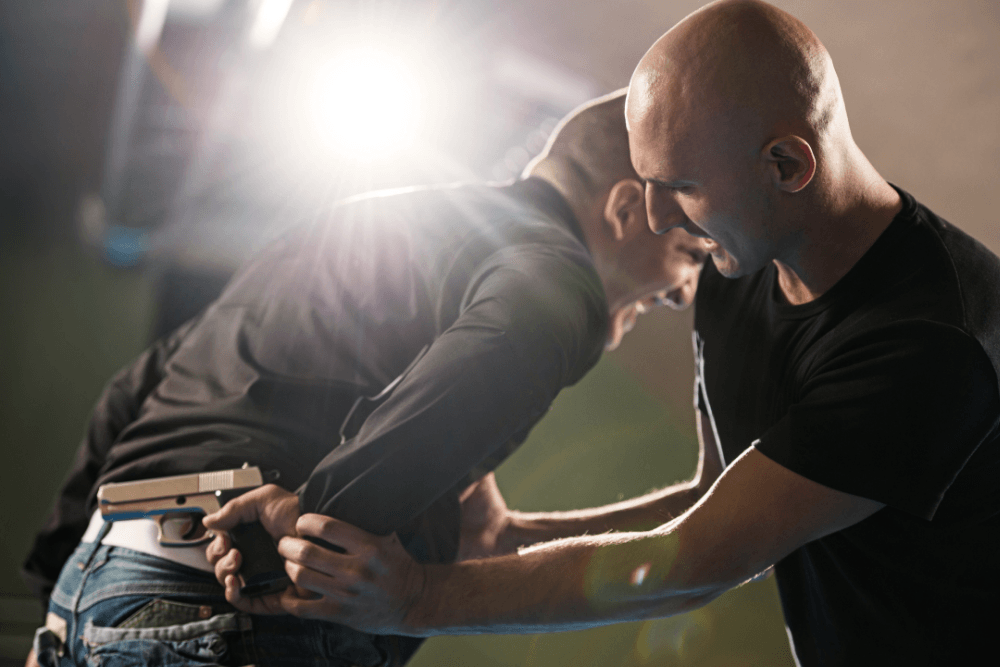
The Difference between Self-Defense, Fighting, and Martial Arts
What is the difference between Self-Defense and Fighting? To answer this question, it’s important to consider what self-defense and fighting actually are and not what many people think they are. Many would have you believe they are one in the same and that a “good” fighter can defend themselves effectively, properly, and legally. These myths could not be further from the truth. We will also cover how they correlate with the martial arts as well as why the martial arts are not always the answer.
You can “fight”, but can you “defend” yourself?
Round 1: Fight!
Fighting is simply voluntary participation in a physical altercation. “It takes two to tango” as they say. This could be as innocent as playful wrestling or grappling with a friend, competing in a Brazilian Jiu-Jitsu match, standing up and challenging a bully, engaging a robber or mugger, or scrapping with the guy at the bar who looked at you wrong, called you names, or insulted your spouse. These are all avoidable interactions.
Does it being “avoidable” mean you shouldn’t stand-up for yourself, protect others, or handle bullies? Of course not… there is nothing wrong with fighting for the proper reasons you find just. Fighting means a person is making a distinct decision to intervene and engage in physical conflict. The moral or ethical reasons for fighting are irrelevant to what fighting means. Whenever we CAN avoid a fight and do not, we are CHOOSING to fight. This is the main difference between self-defense and fighting.
As with everything else, knowing how to fight comes with plenty of pros and cons. Some pros include teaching a bully a valuable lesson, winning, learning how to handle yourself (competition), protecting a loved one, surviving the “streets” with regular challenges, etc. But will “knowing how to fight” prepare you for a self-defense scenario? Let’s look at the cons on fighting… but remember, it’s important to know that most people will not voluntarily fight if they do not expect to win. This idea may suggest they have an advantage over you which could be a weapon, friends of standby, or just more skill.
Cons to fighting include life-threatening or debilitating injuries, the opponent could be a better overall fighter, weapons involvement, multiple opponents, legal issues including prison, fines, or lawsuits, and of course death. Are any one of these cons worth jumping into a fight?
Here is an article about an MMA fighter stabbed during an altercation. Or when an experienced BJJ practitioner and coach trying to spoil a robbery. Another BJJ Black Belt loses his life in a road rage incident. BJJ doesn’t help one unfortunate soul because a gun came into the picture during a street fight. A college wrestler lost his life due to gun violence. Even in Russia, great wrestlers brawl and die doing what they know very well but forget about the “real”. And let’s not forget about the knock-out game that was plaguing the communities of NJ and NY for many months. You can’t block a sucker-punch to the back of the head… Individuals can have “fighting experience” yet lose the battle of self-defense.
Food for thought…
Johnny fought a guy at the grocery store who bumped into him and dropped explicit profanity his direction yesterday. Johnny “won” that fight by breaking his arm and knocking him unconscious. But this was after the other guy got a clean sucker-punch. Johnny’s mouth is wired shut for 6-months and serving 2-5 years for aggravated assault and battery. His wife is struggling with the bills and childcare and considers divorce. But Johnny’s honor is intact. Johnny is proud. Johnny stood his ground!
Was Johnny right or wrong? That is a matter of personal opinion… it depends on the situation and mental state at that time. What does matter is the long-term. Was it worth it? Johnny could’ve been home right now with his wife and children eating ice cream if he had just walked away.
What’s different about Self-Defense?
So now, what is self-defense? In one word… SURVIVAL. Self-defense is the “unavoidable” situation which requires you to act in order to protect yourself. It involves the use of P.E.T., prevention, escape, and tactics.
Self-defense often involves the use of tactics as a tactical response to the situation, but only when an attacker forces their hand and is often a reactionary response. Fighting experience will come in handy to the tactical portion of a self-defense scenario. The goal is to escape.
The striking and other tactics you use during self-defense are performed because you must, not because you choose.
Some examples of “self-defense” include kidnapping, rape. multiple attackers, knock-out game, workplace or public shooting, someone attacking you although you’ve tried to resolve the situation peacefully, being chased by a dog, an individual with a knife randomly picking fights, murderous home-invasion, road-rager pulling you out of the car, a jealous boy or girlfriend grabs you, etc. We are talking about dangerous situations that are not typically ones in which people just “walk away”.
When we are “fighting”, we usually have time to assess the fighting style, movements, aggressiveness, and to strategize your win. Self-defense does not usually allow you this “time”. If this time exists, use it to run away… otherwise, you may end up like Johnny.
It’s very important to take into account the legal aspects of self-defense. Always educated yourself and be prepared from a legal aspect to make better and more intelligent decisions. One place to start is www.findlaw.com. DO your best to avoid the “Fight after the fight”.
Martial Arts and it’s role in fighting and self-defense…
How is fighting and self-defense related to the martial arts? Fighting and self-defense can be learned many ways. It could be the hard way through experience such as street fights, a family member or friend, or it could be through martial arts classes such as BJJ, Kempo Karate, Jujutsu, Judo, Boxing, Muay Thai, MMA, Krav Maga, Aikido, and even the Samurai Sword and other weapons training.
But can a martial artist defend themselves? Well, what if a boxer or karate practitioner is taken down to the ground without “ground-game”? What if a BJJ blackbelt is sucker-punched or a knife is involved? Can a Muay Thai fighter stop a bullet? Often, the martial arts will specialize in a specific subset of skills like striking or grappling. Because of this, they will naturally exclude aspects of self-defense that may be crucial. Every art will be better if they regularly consider striking, grappling, and throwing during instruction. There are also weapons such as guns and knives to consider. They are real and everywhere. You must be very specific with training with a against these weapons.
Self-defense is not fighting; it is not a competition. However, the skills these practitioners have developed over years of training can definitely save their lives… in the right situation. The best way to learn fighting or self-defense is through dedicated, legitimate self-defense courses, or by learning martial arts to acquire skills in striking, grappling, weaponry, & throwing.
I’m a blackbelt, can I defend myself?
The average student will need many years of training in any one martial art to learn self-defense techniques or fighting. Also, many schools or dojos will focus on either fighting or self-defense. Fighting “well” takes skill and strategy while self-defense is more explosive, reactionary, and straight to the point.
In BJJ, for example, a blue belt is about what an average person will need to defend themselves in a (weapons-free) 1v1 grappling situation and takes 1-3 years to achieve. However, Krav Maga is mostly self-defense oriented, so you could potentially learn “practical self-defense” in a shorter time-period. But fighting takes, quite simply, years and years of practice, determination, and dedication to become proficient. We are talking about technical mastery, speed, strength, stamina, and endurance training.
In short, self-defense methods involve Prevention and Physical Tactical Response. There are plenty of resources on how to prevent scenarios from happening. Tactical Response, however, is engraining specific movements and tactics into muscle memory and the subconscious so they can be utilized quickly and effectively under stress. With commitment, you could learn self-defense physical tactics within a very short time frame. Examples could be learning fundamentals of escaping grabs, where and how hard to hit, improvised weapons, etc.
Since the martial arts are typically taken up as a hobby, form of exercise, or to compete, and involve hundreds of techniques and movements, it can take much more time to engrain the principles needed for self-defense.
